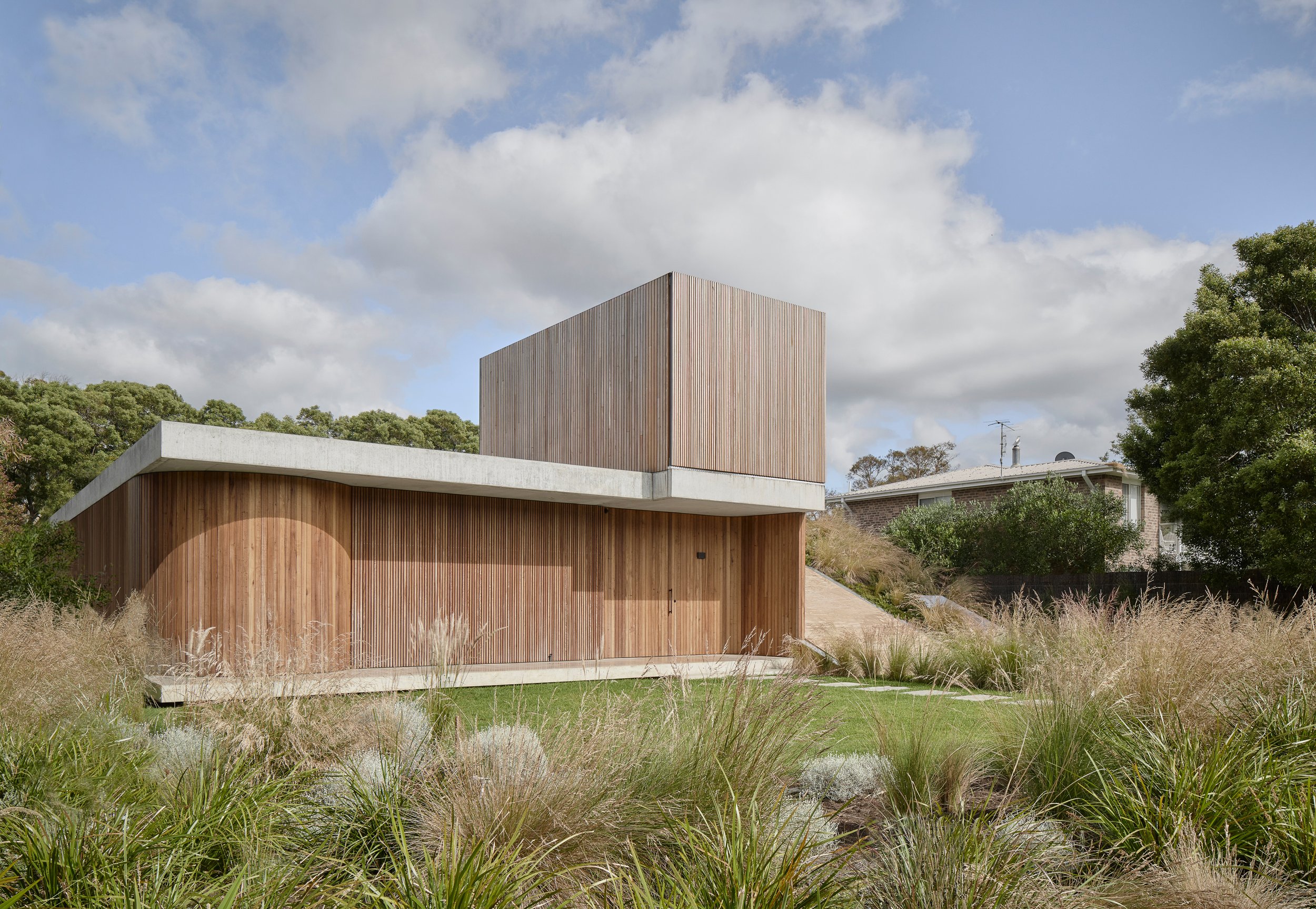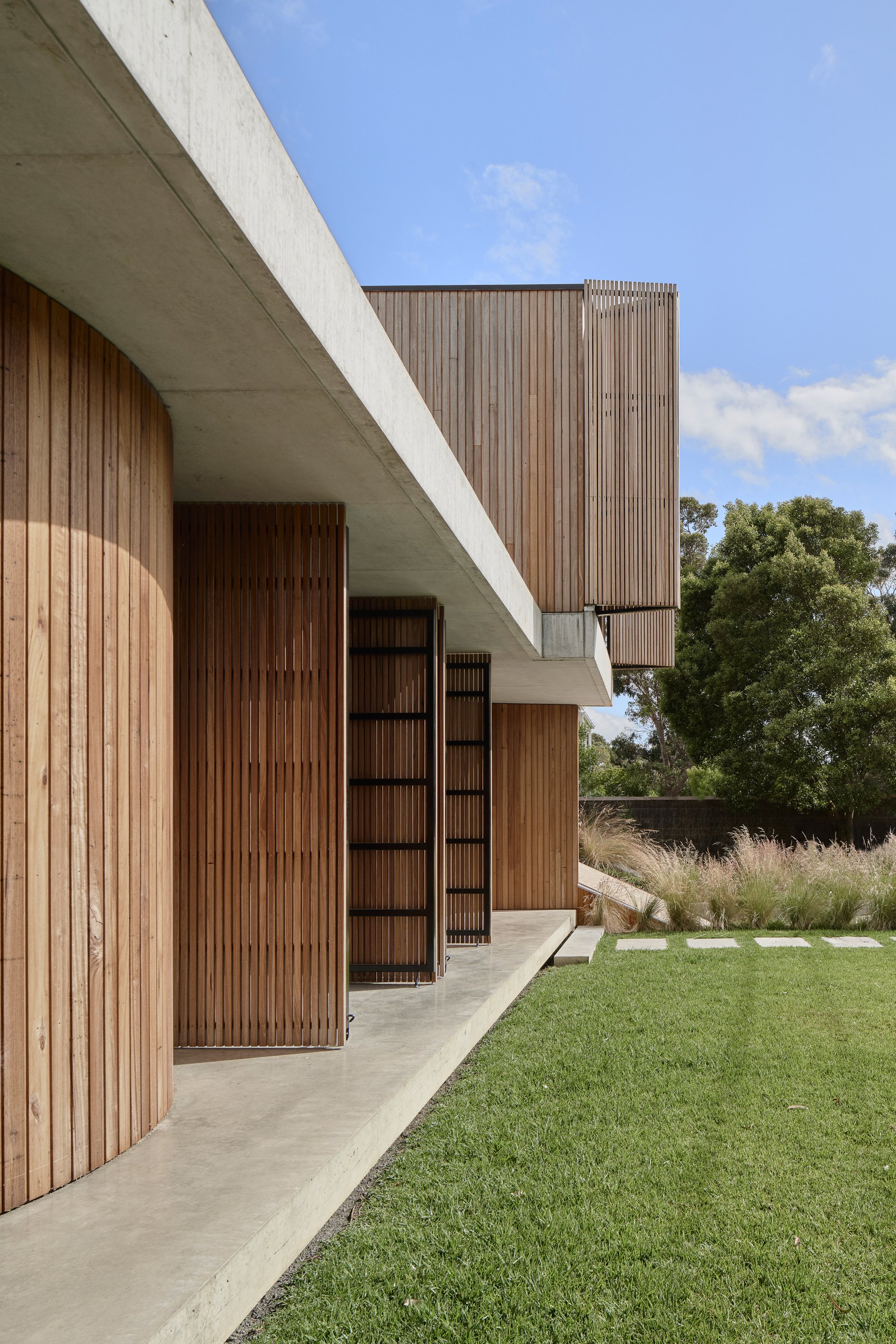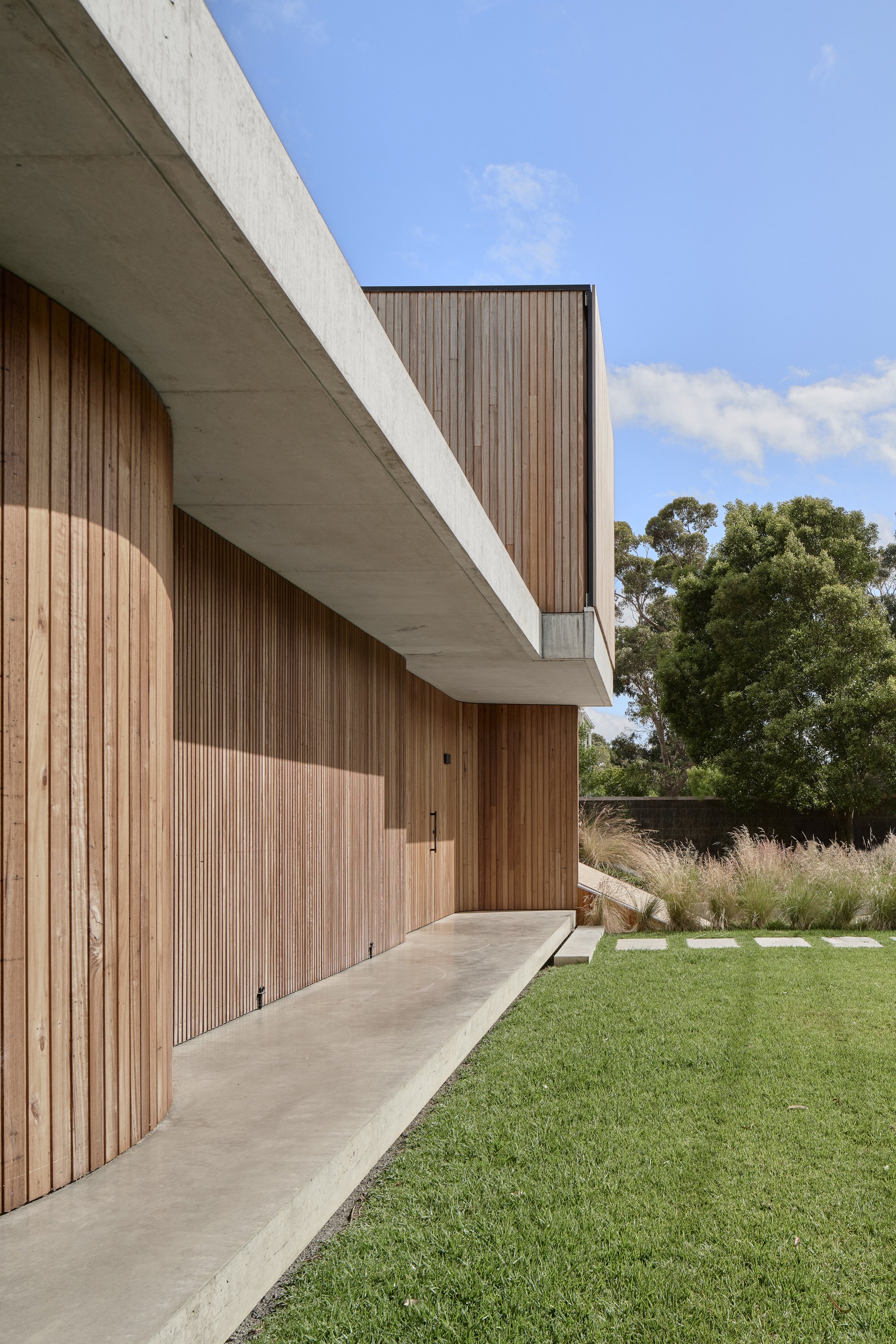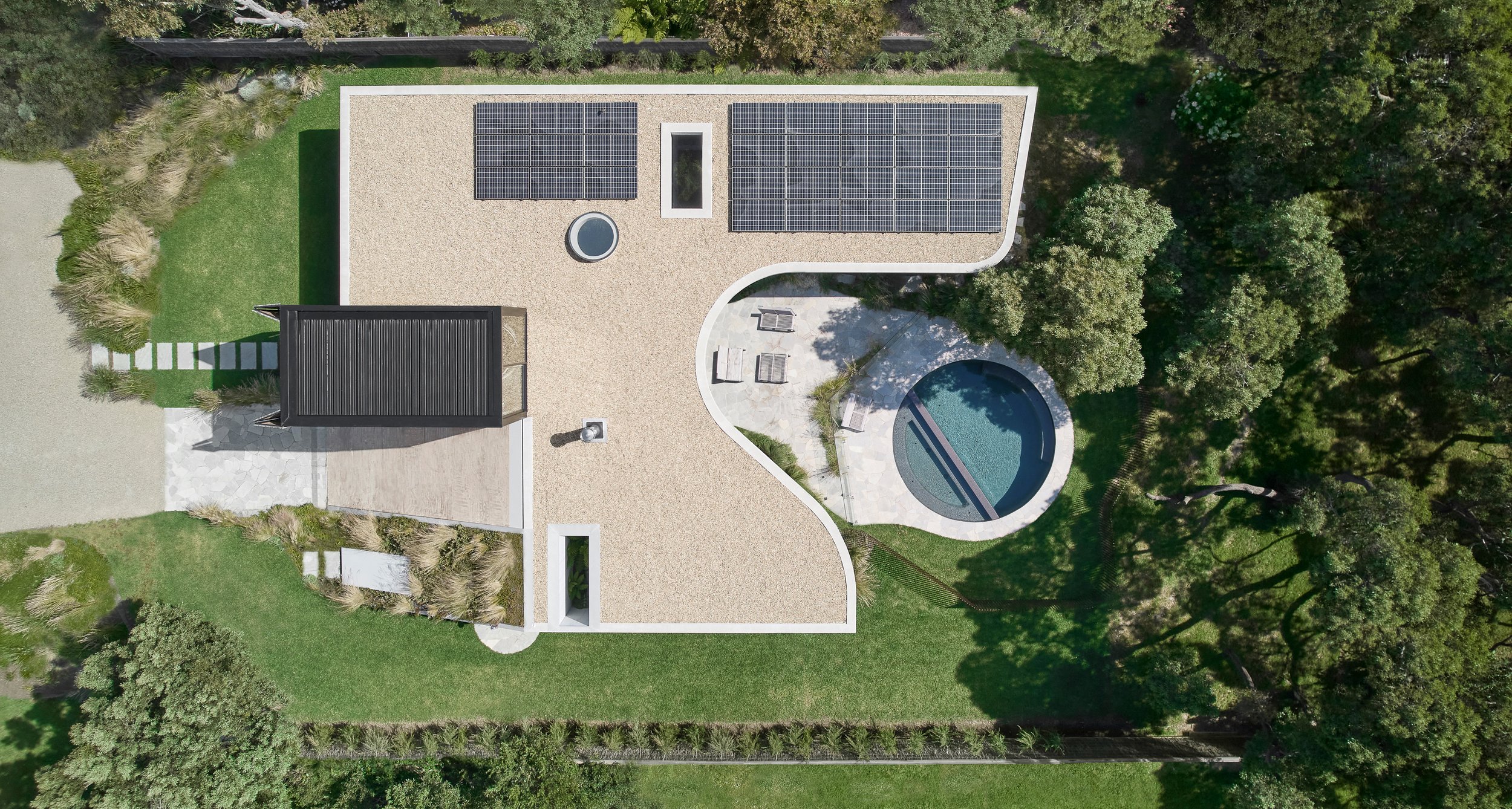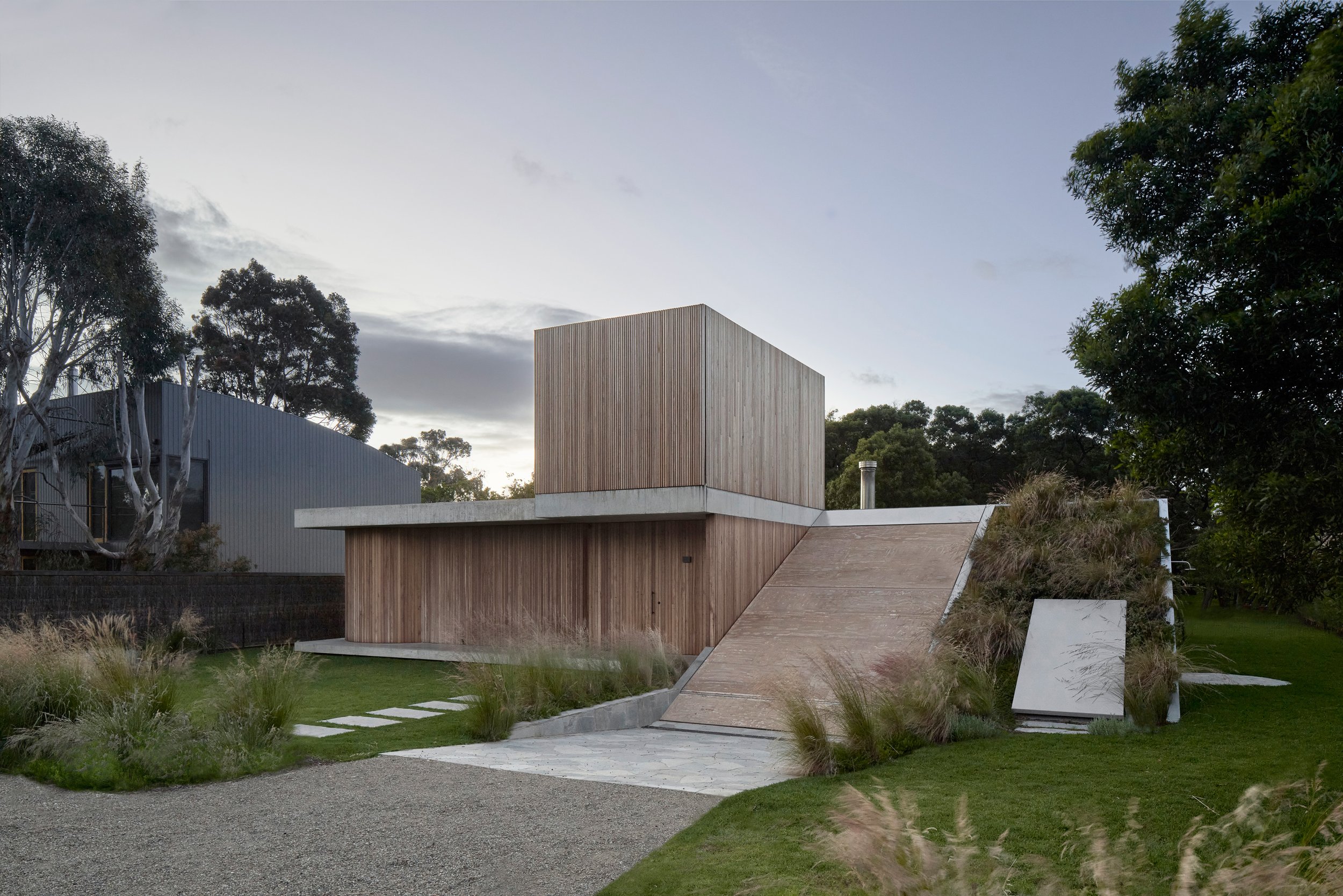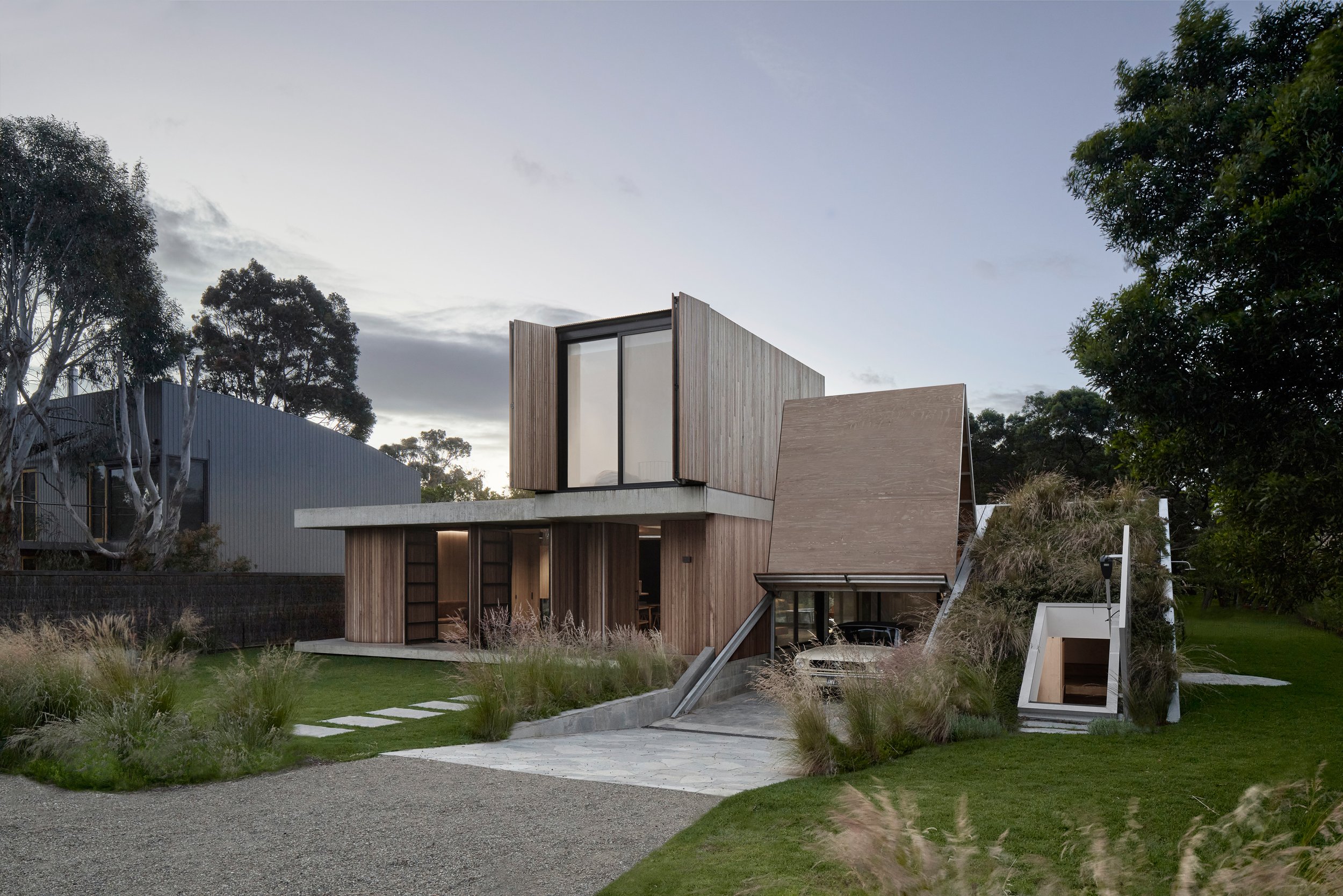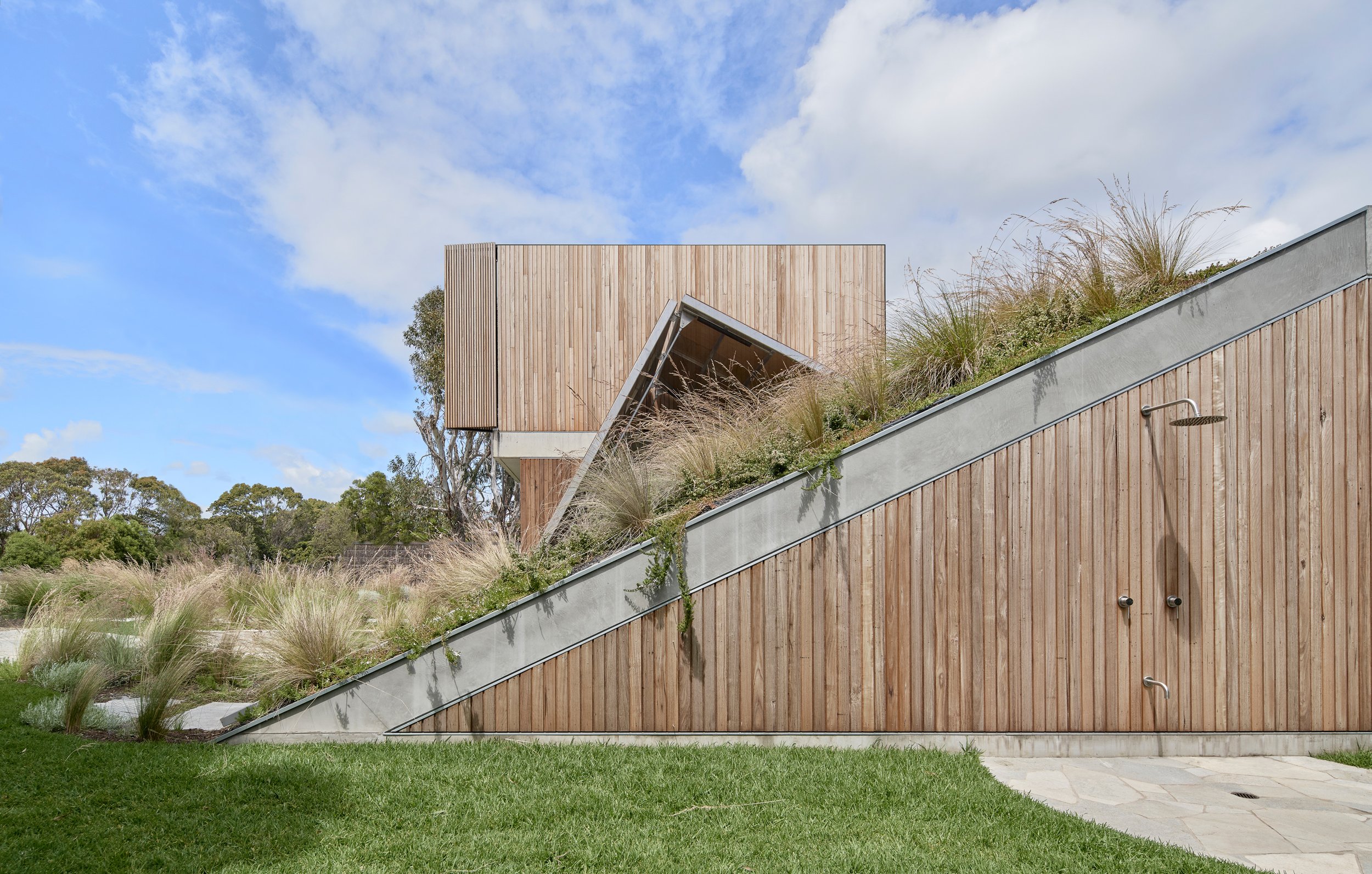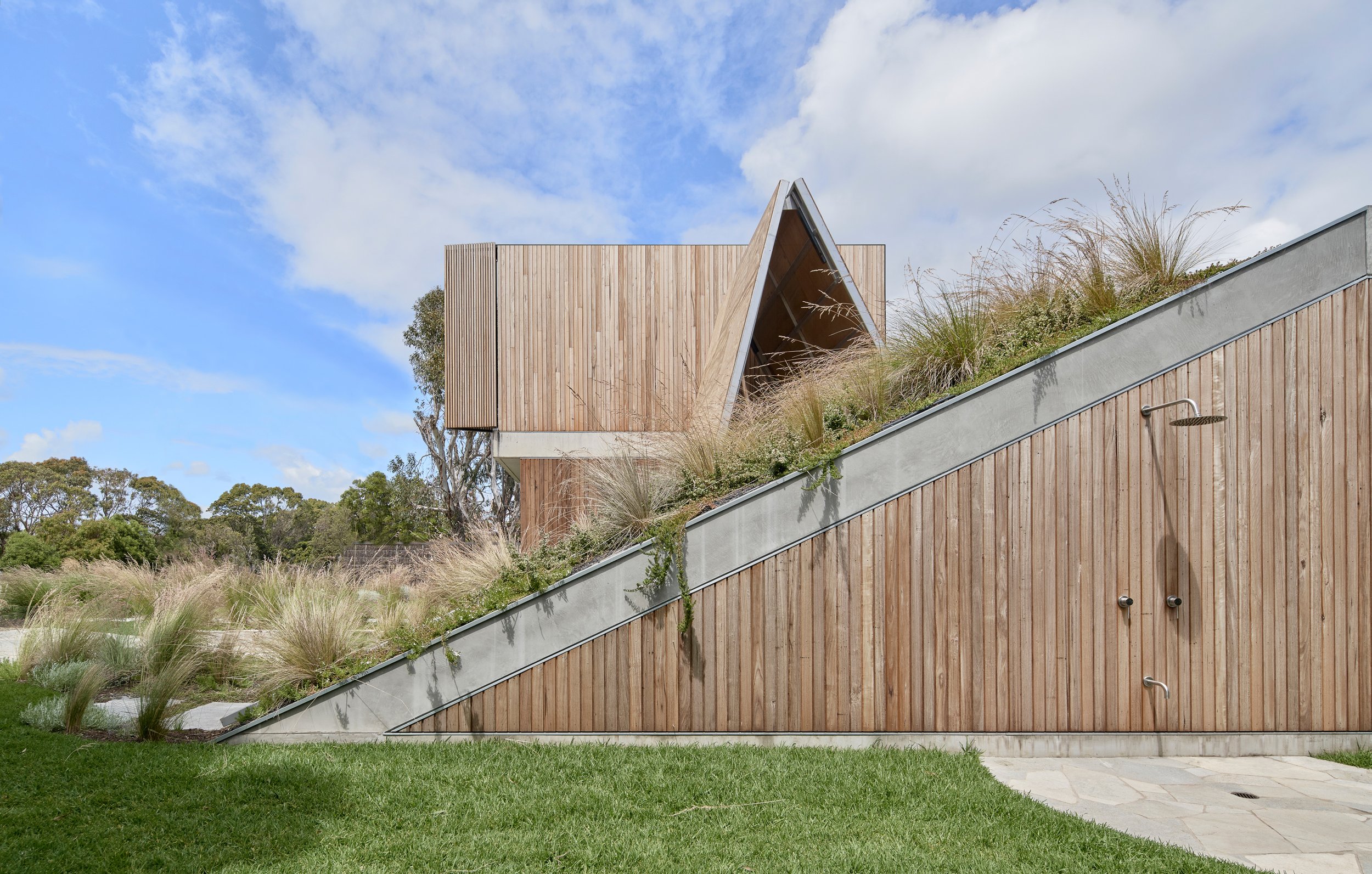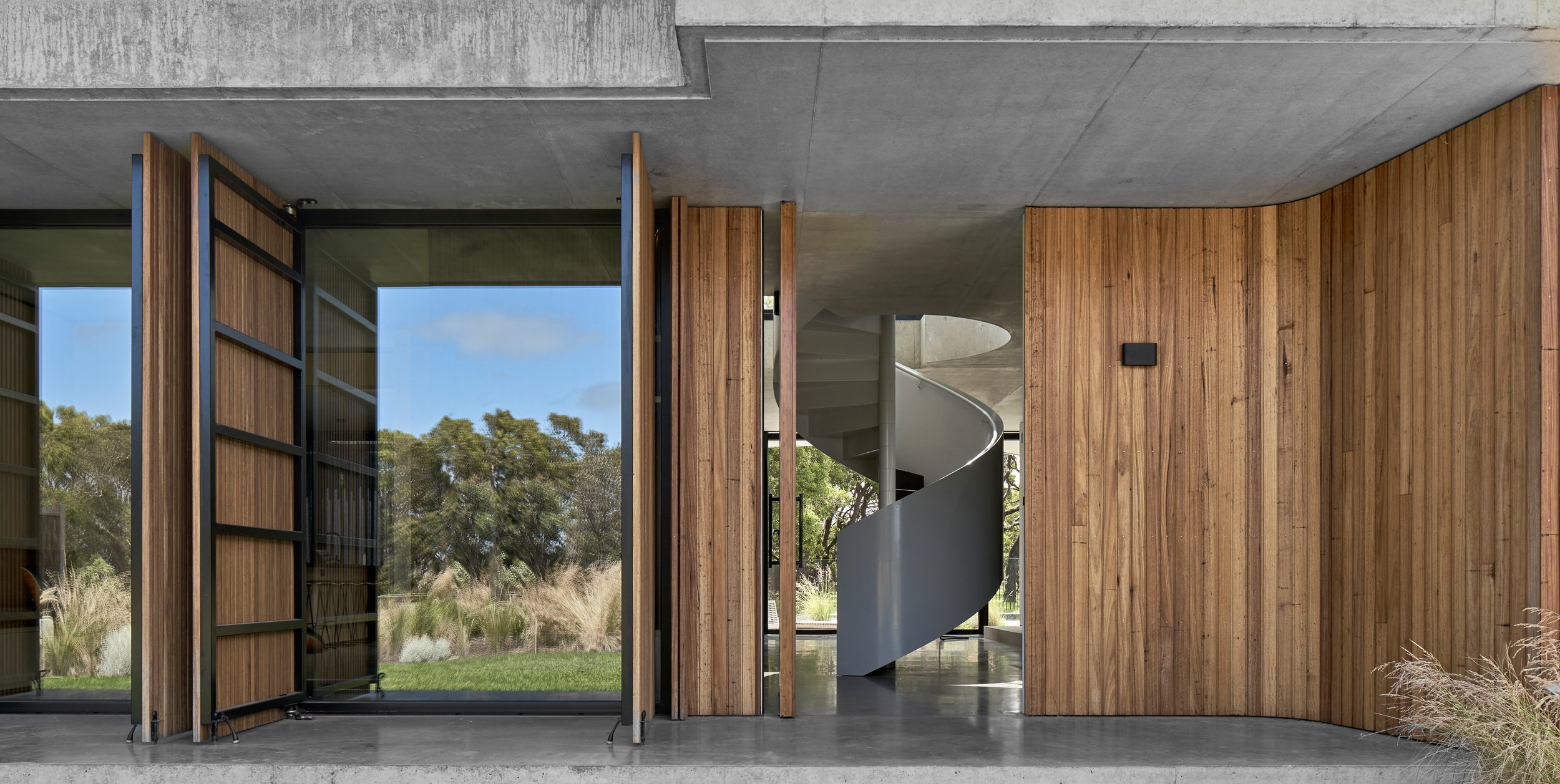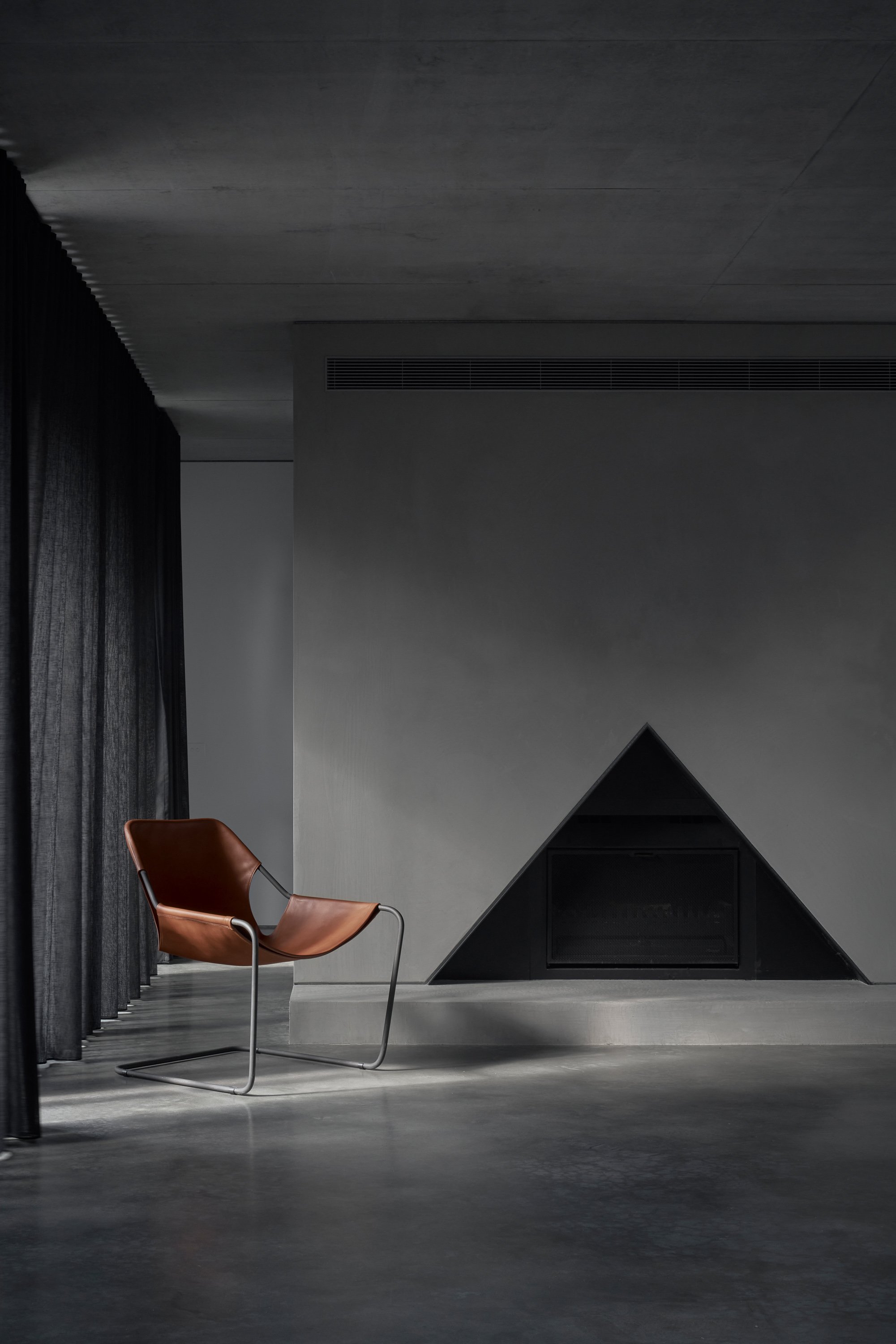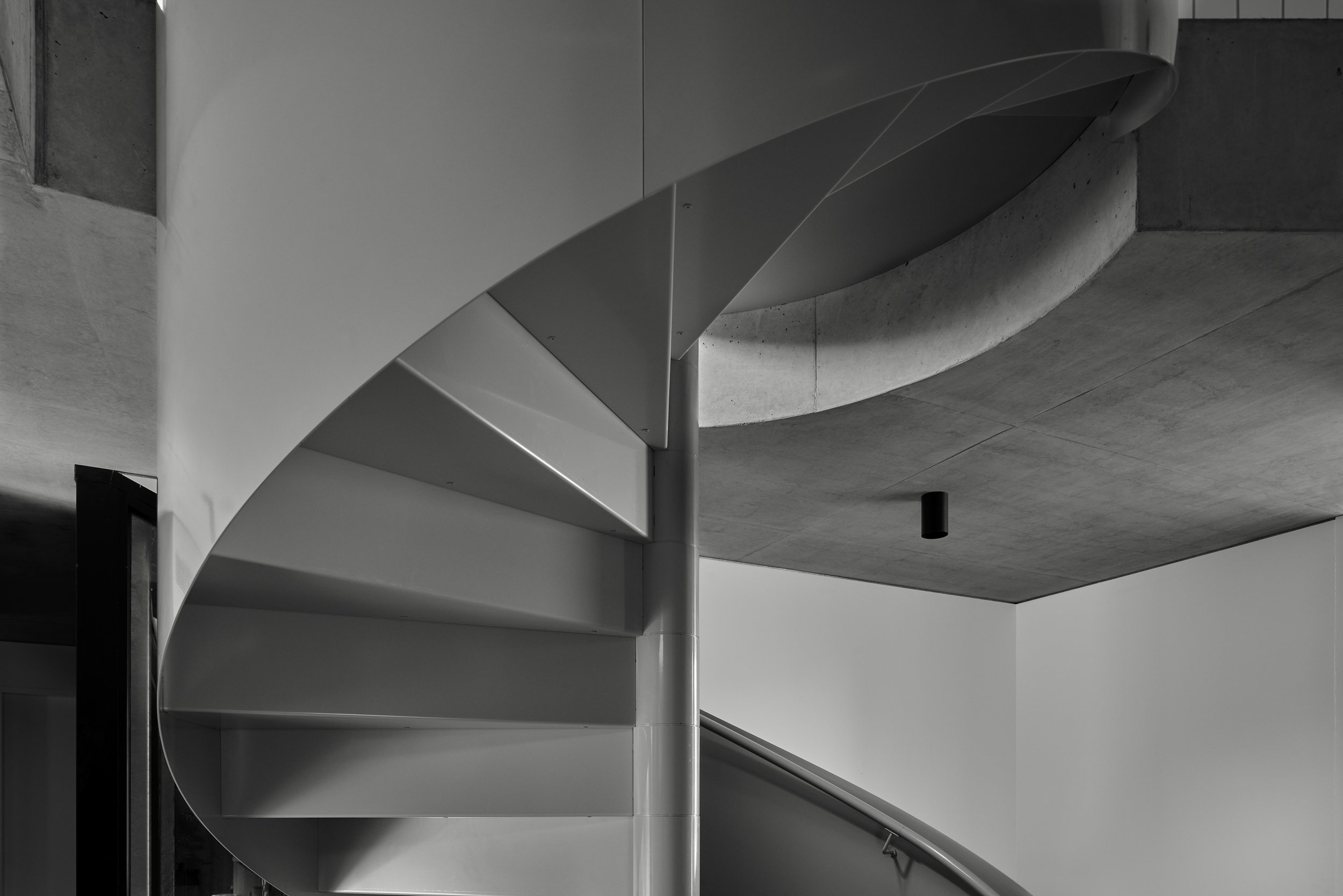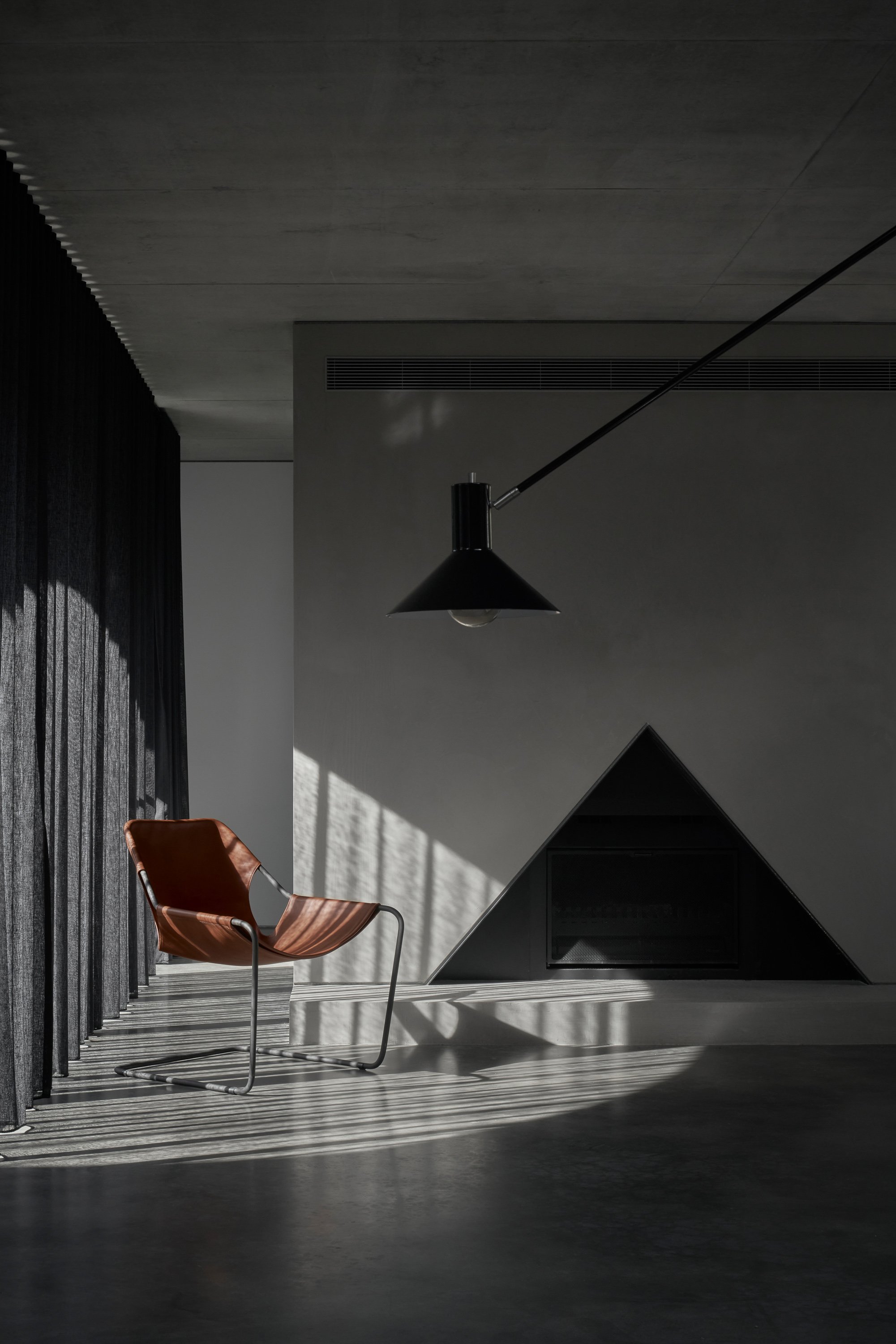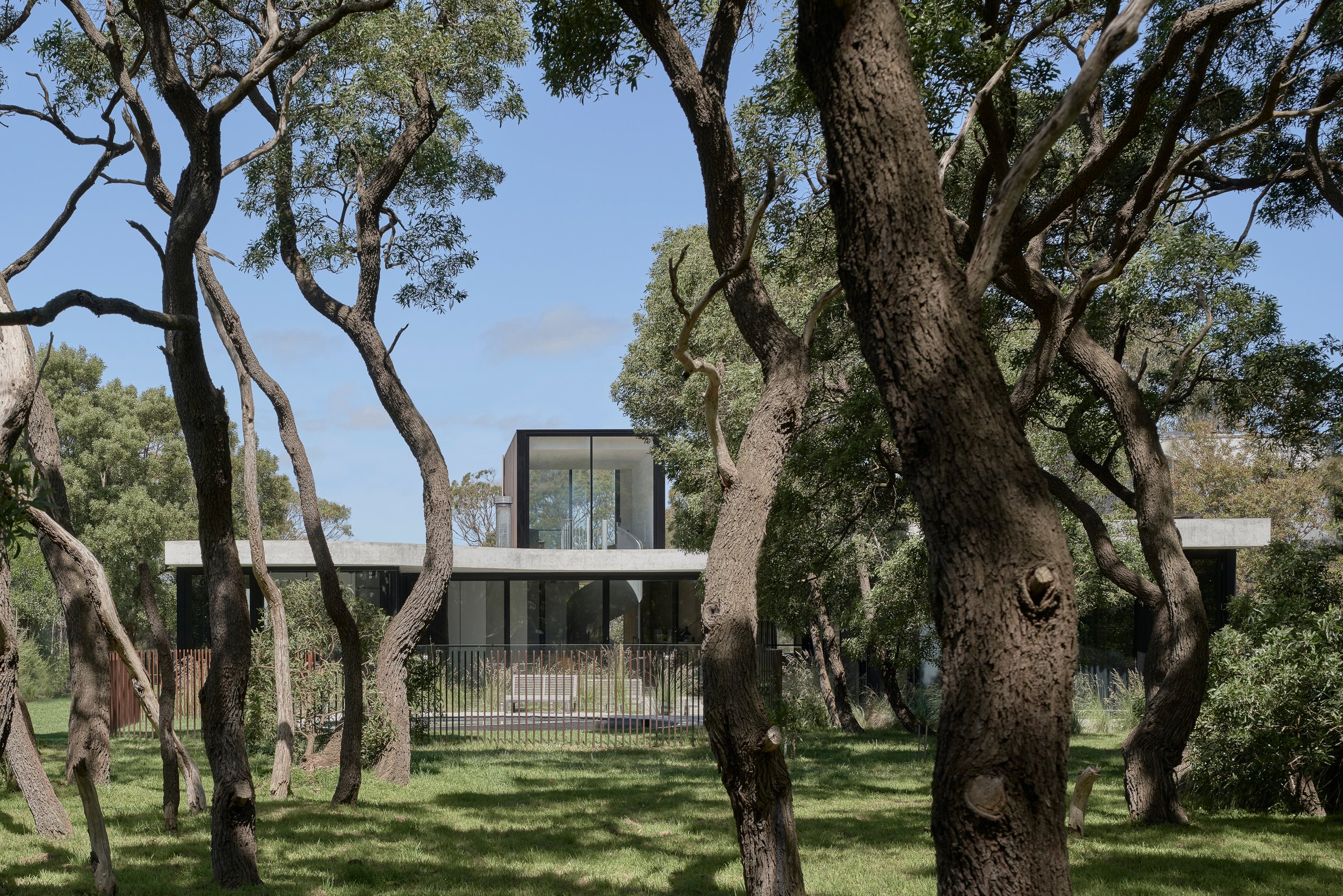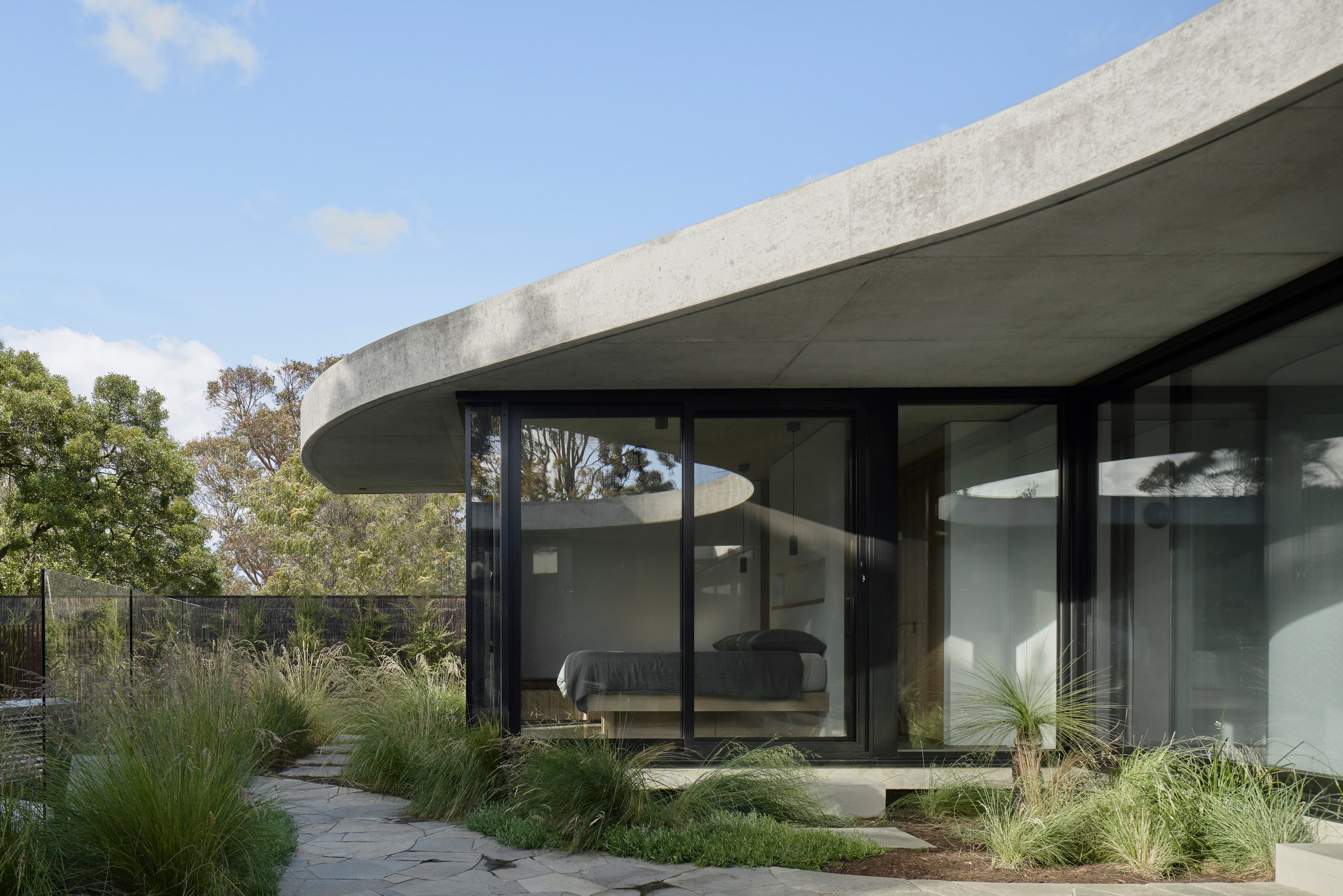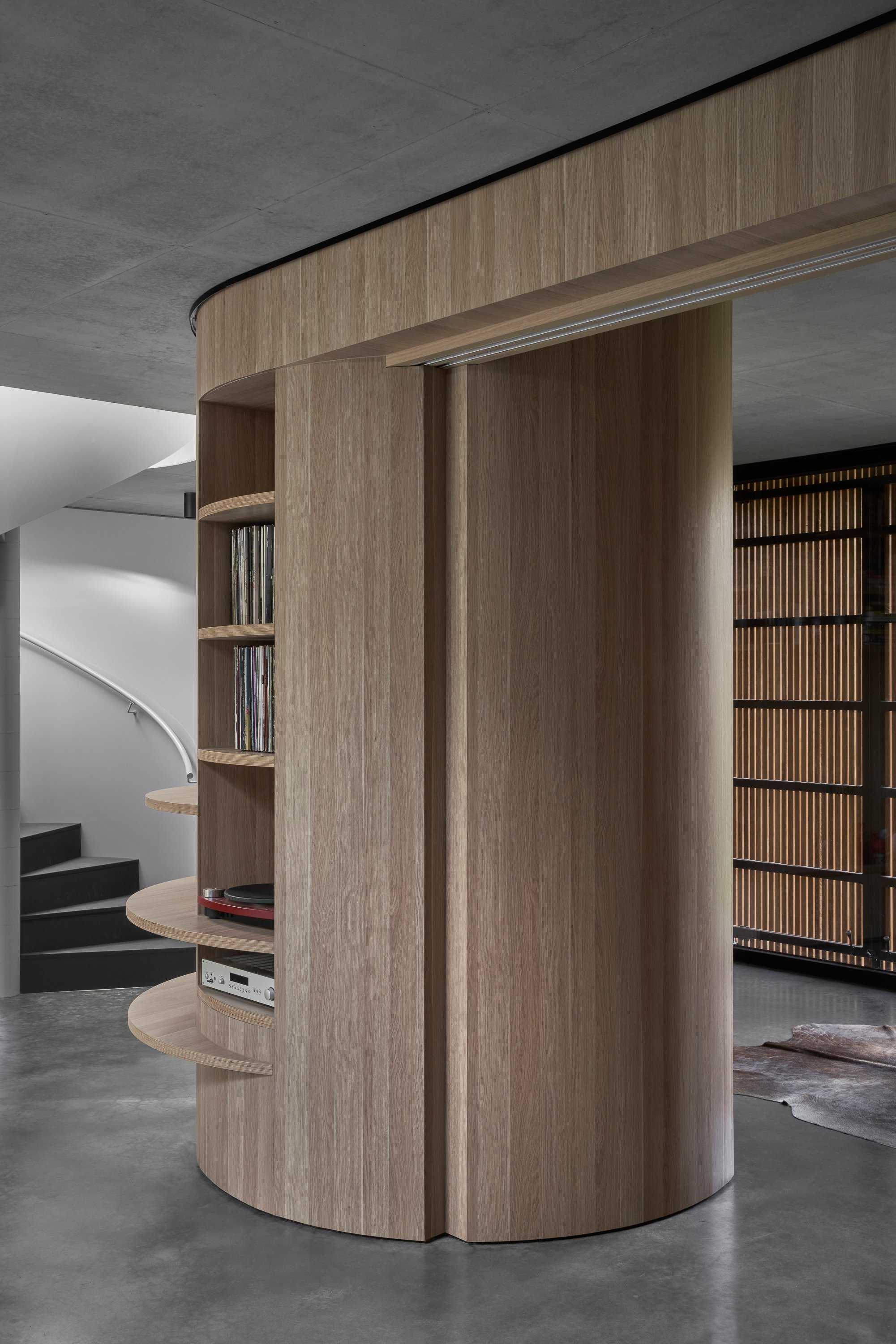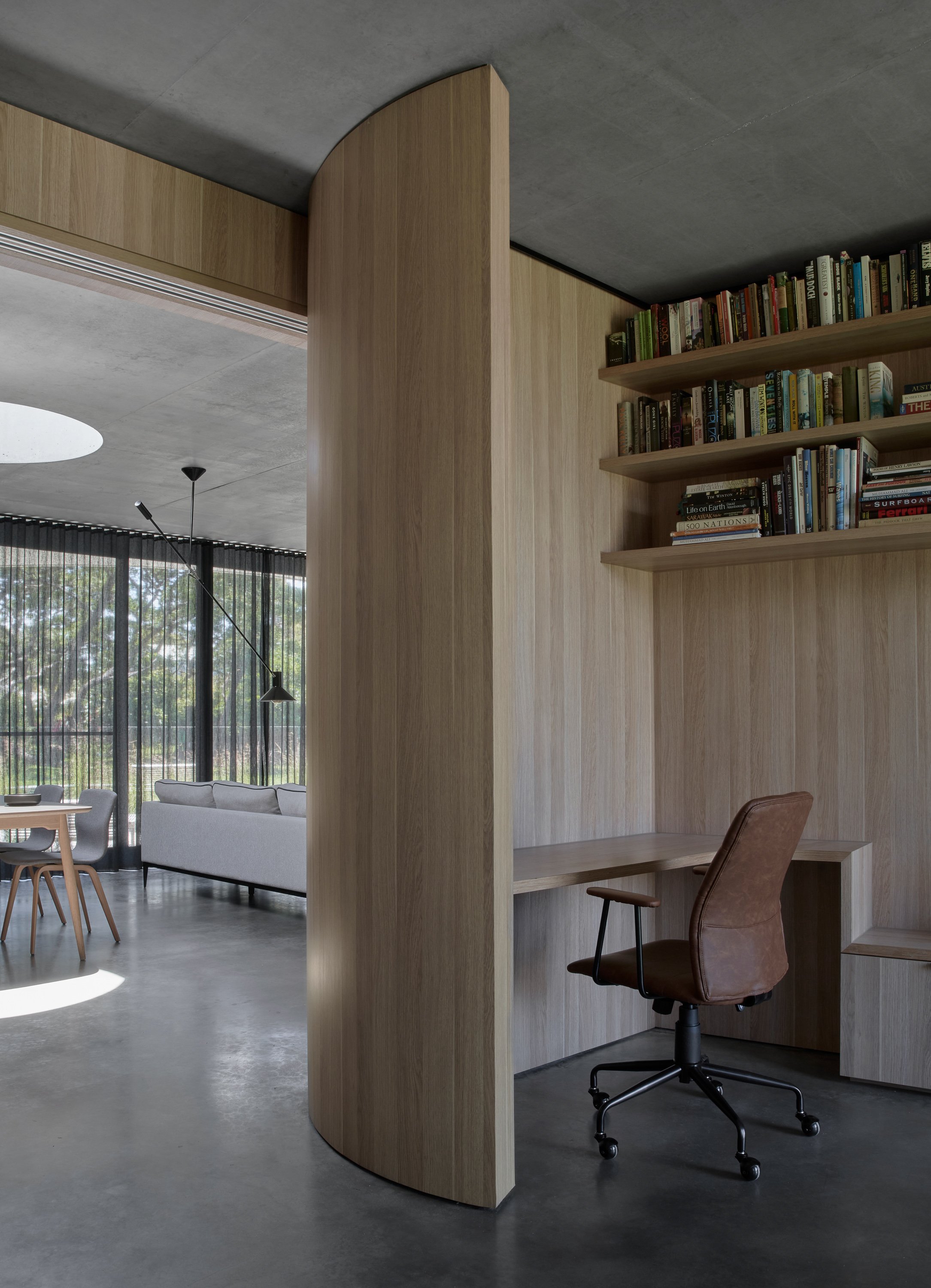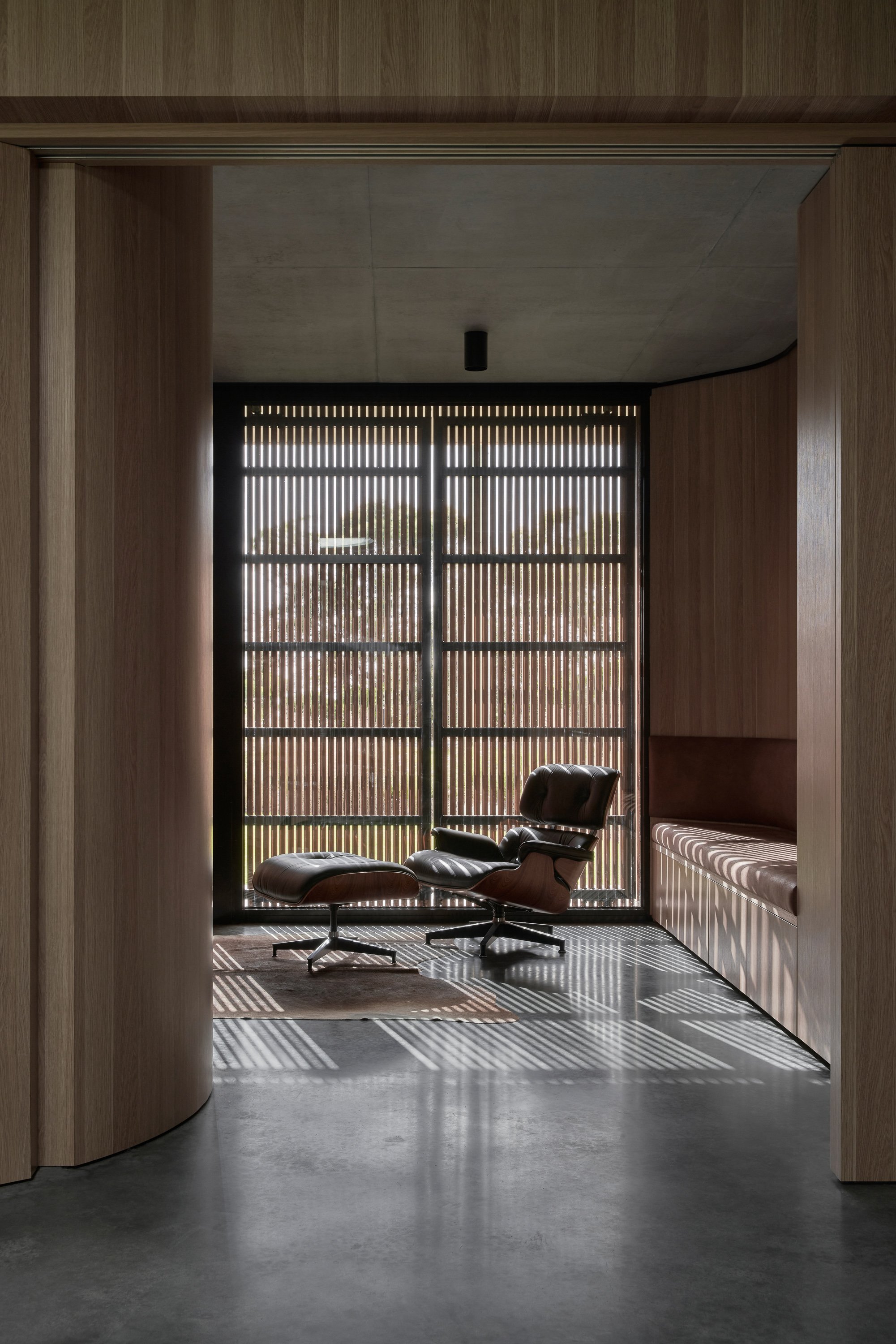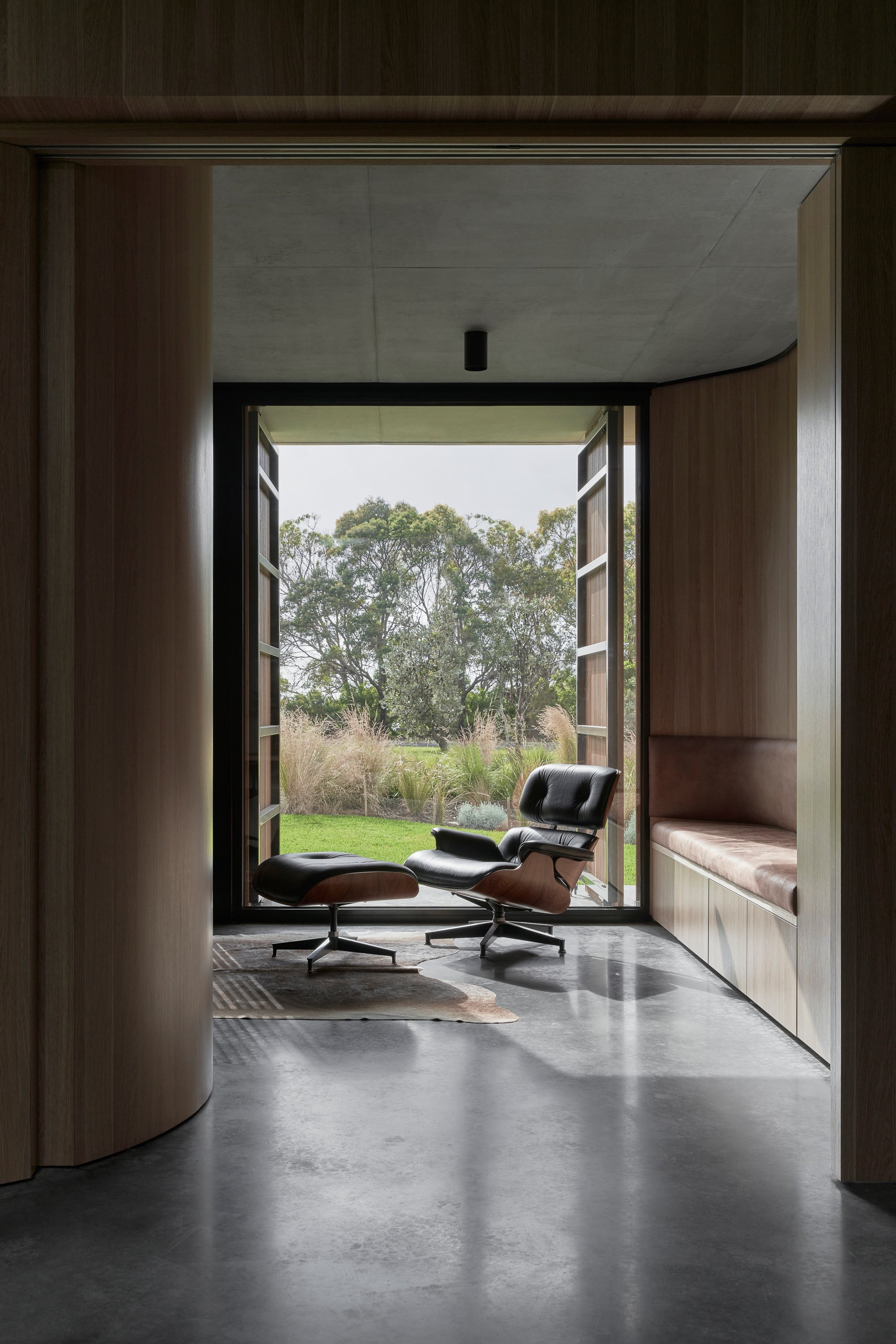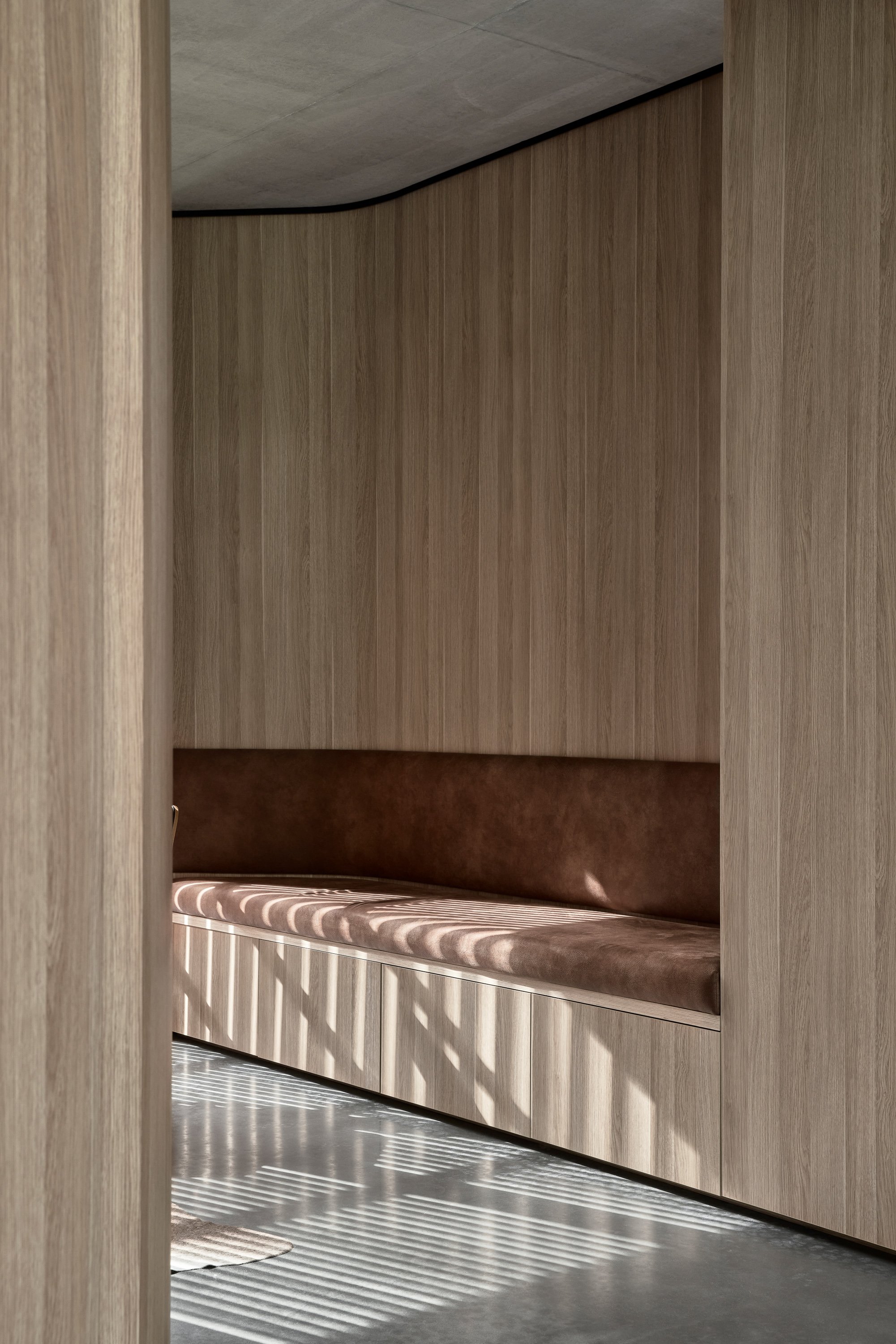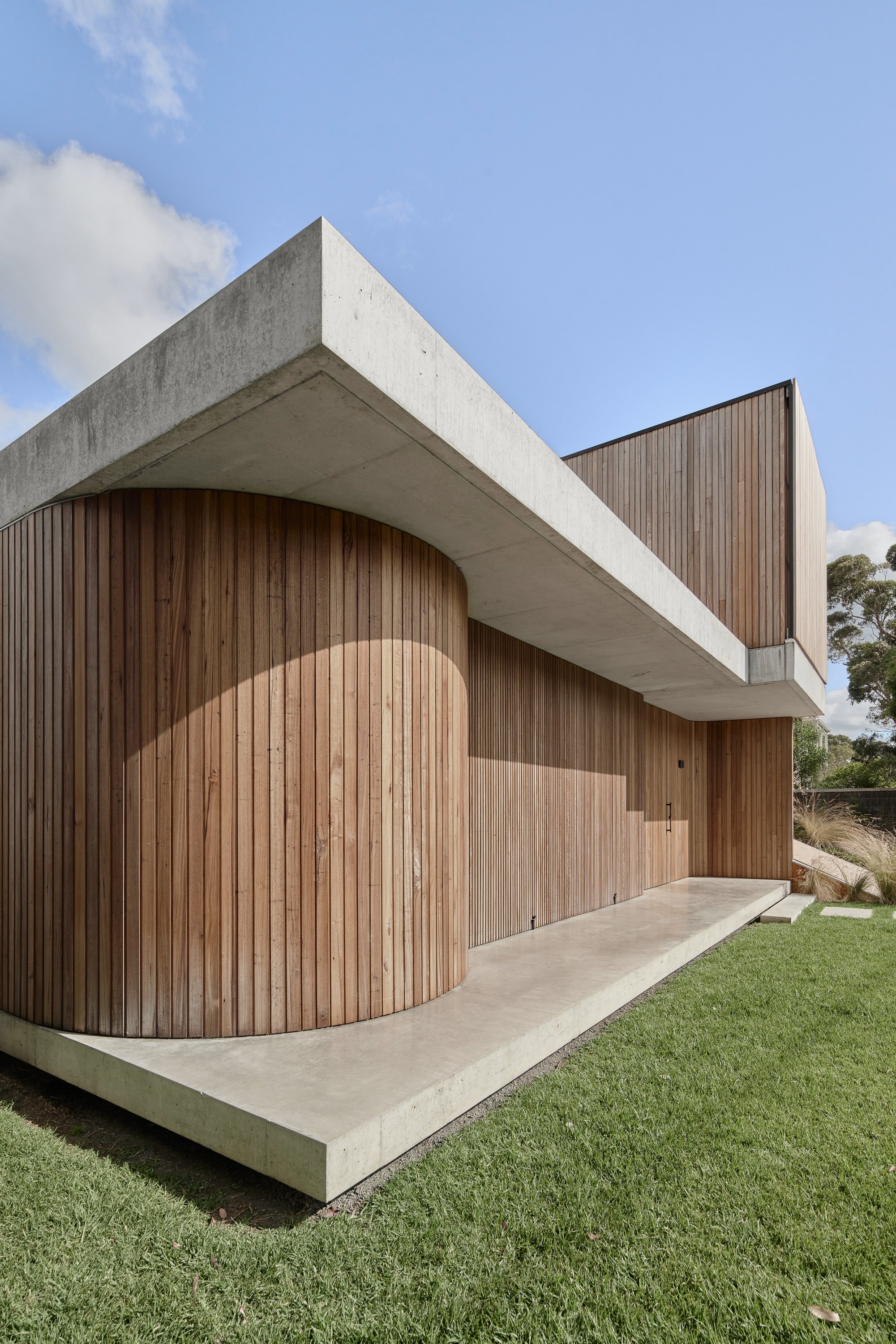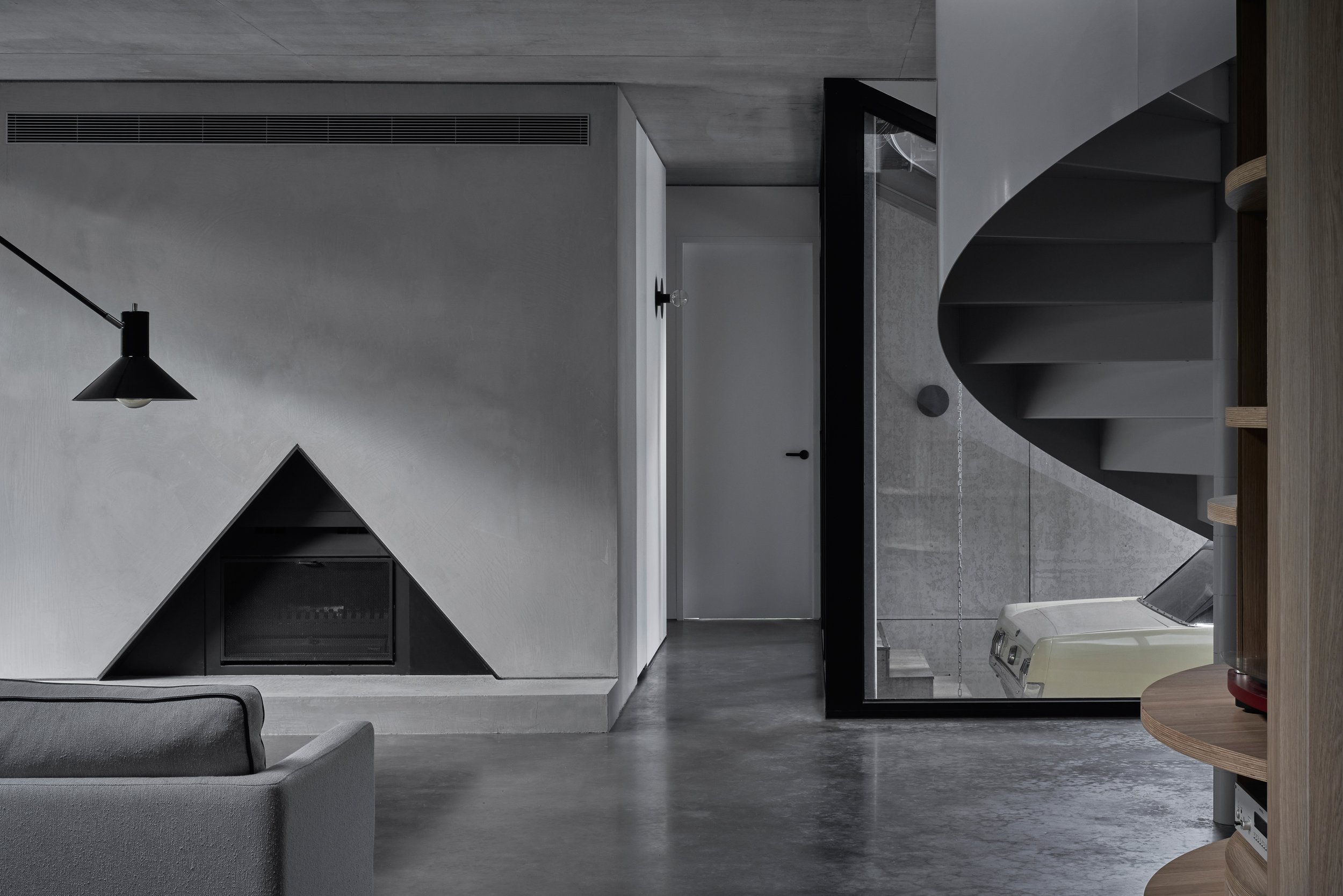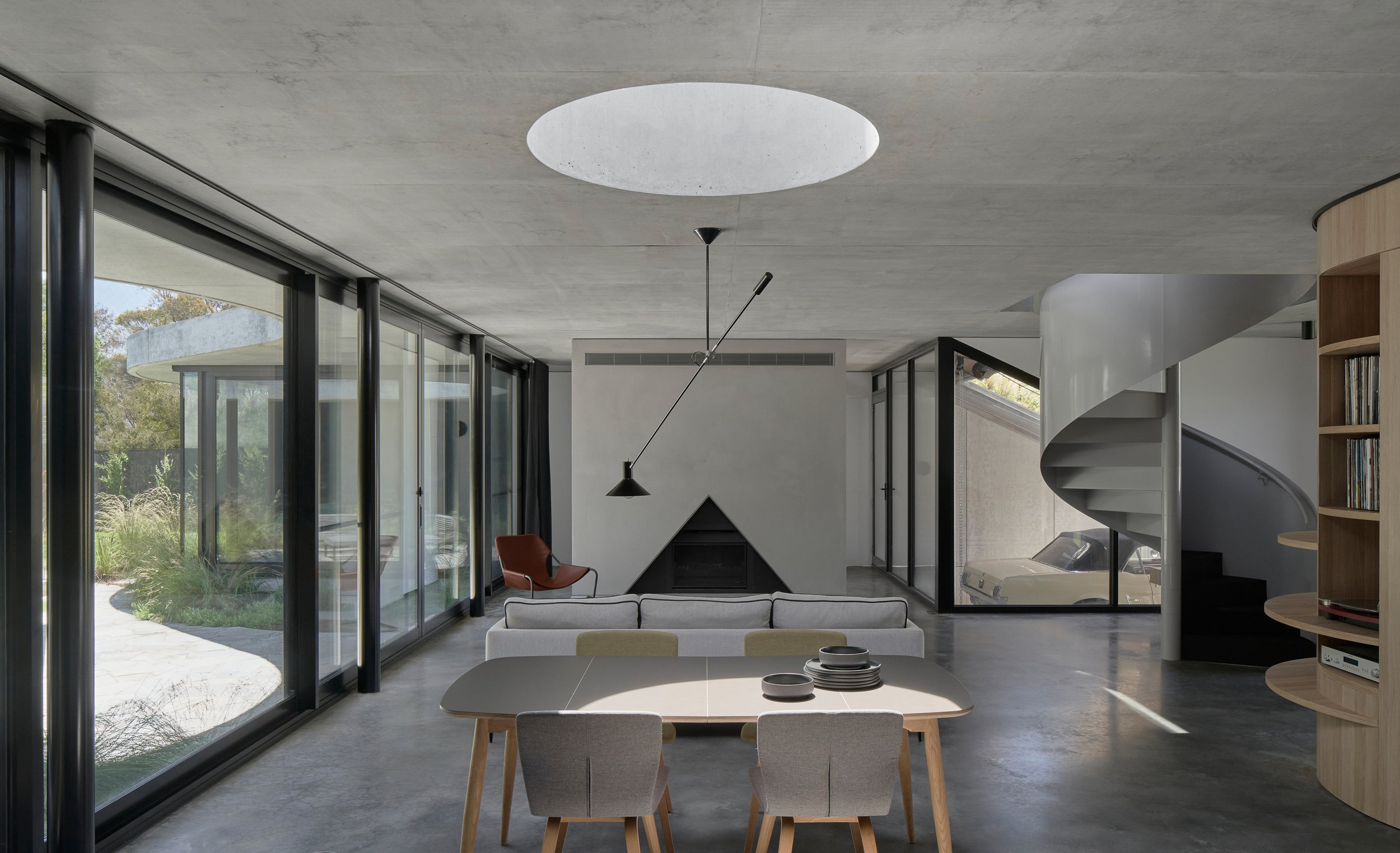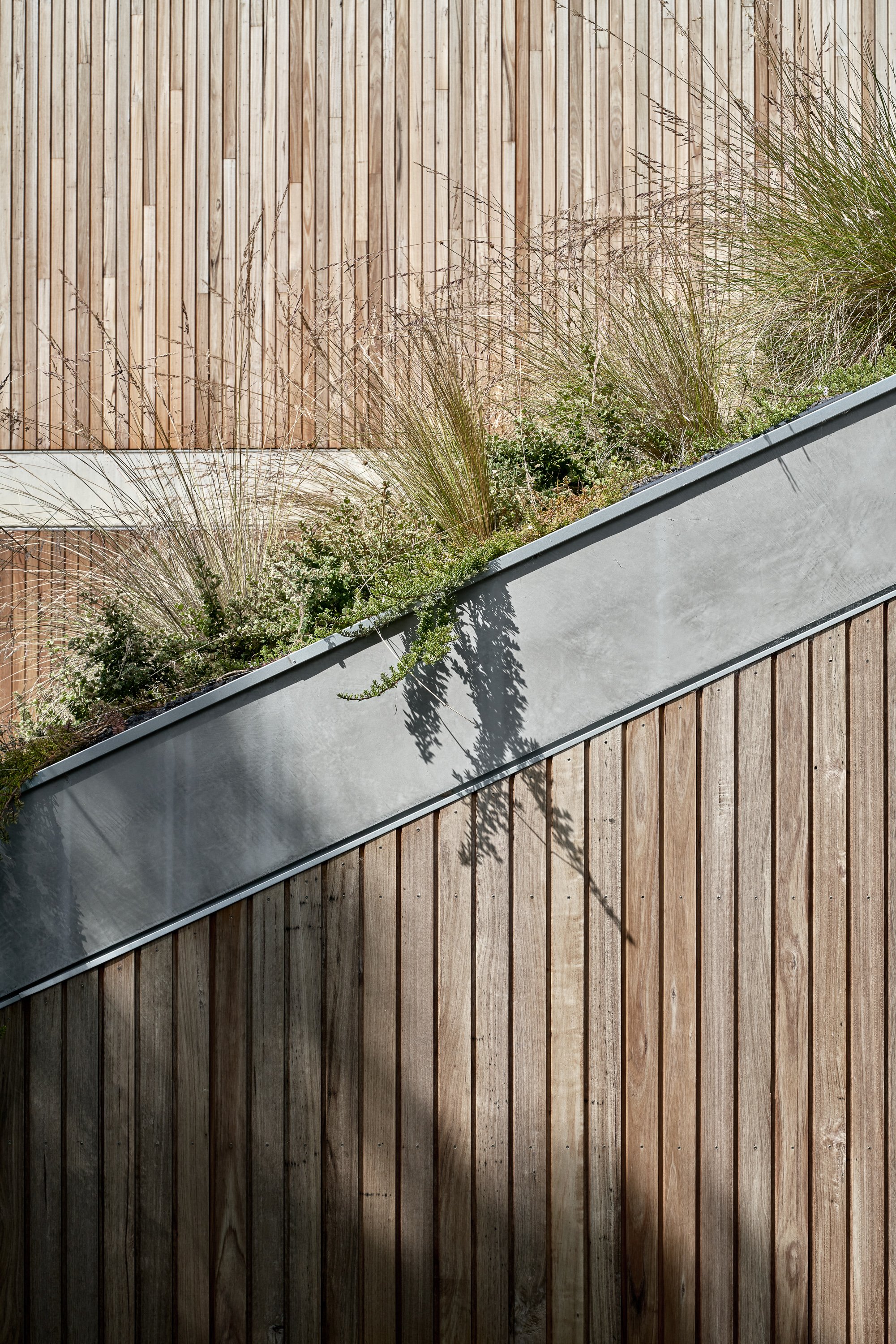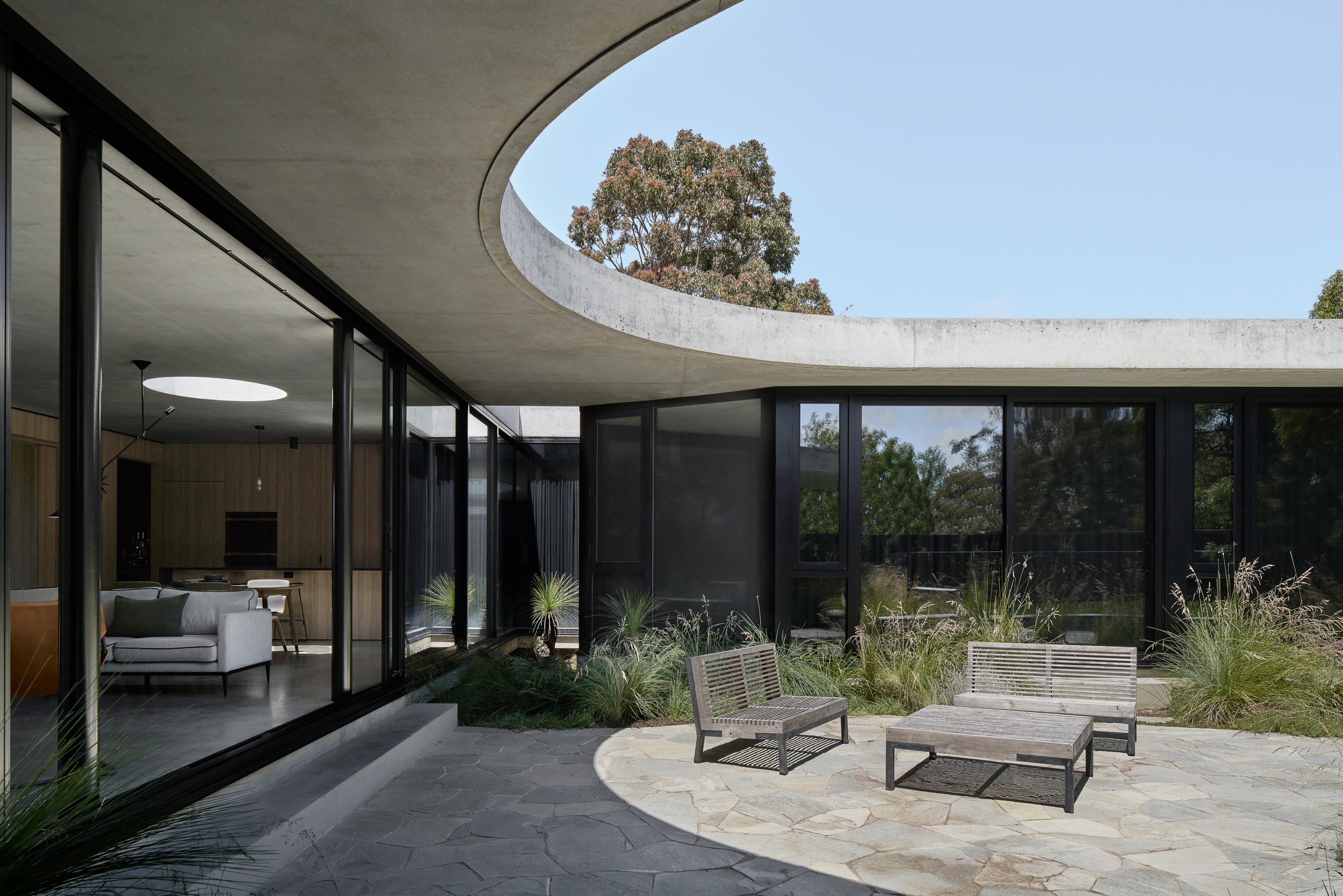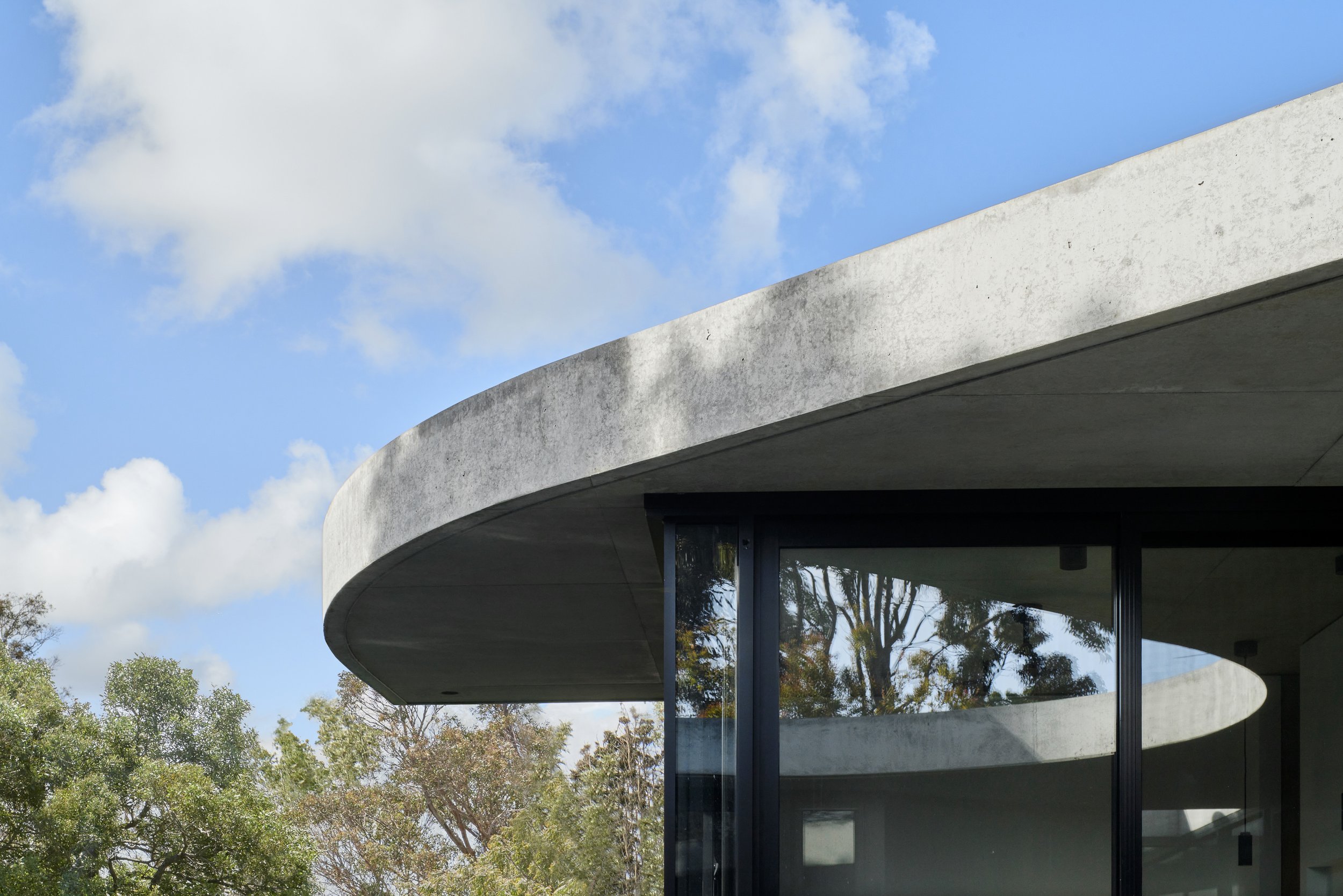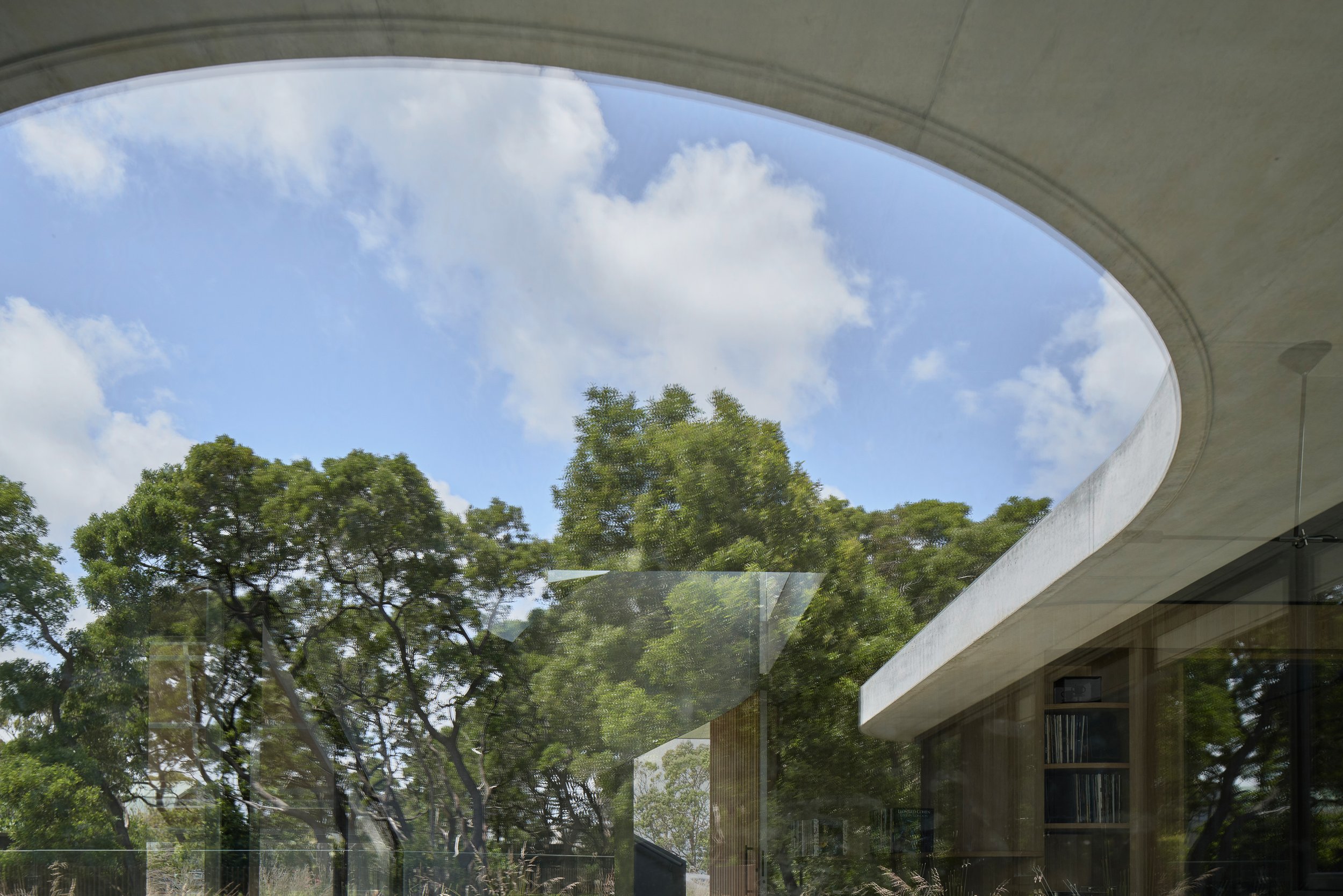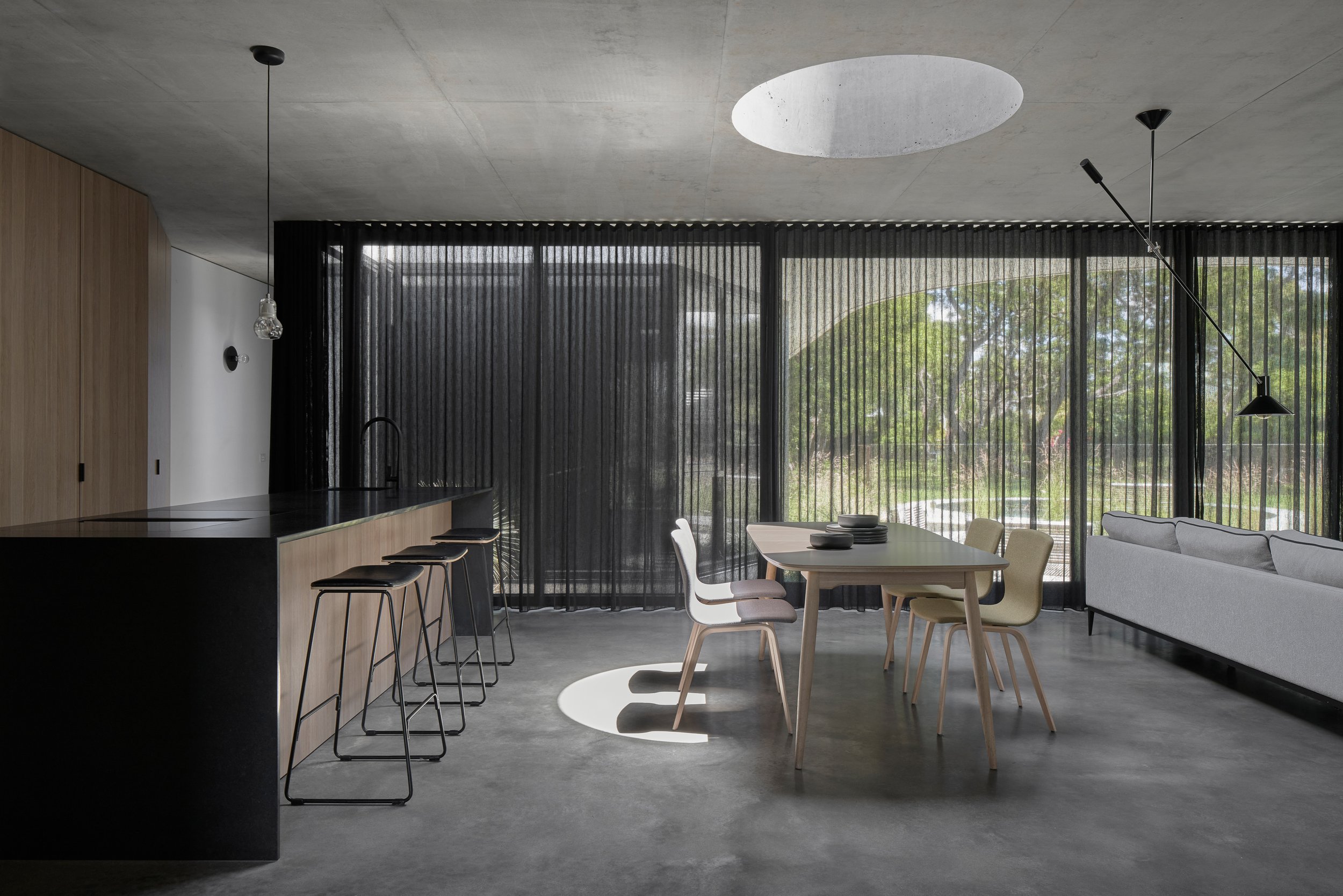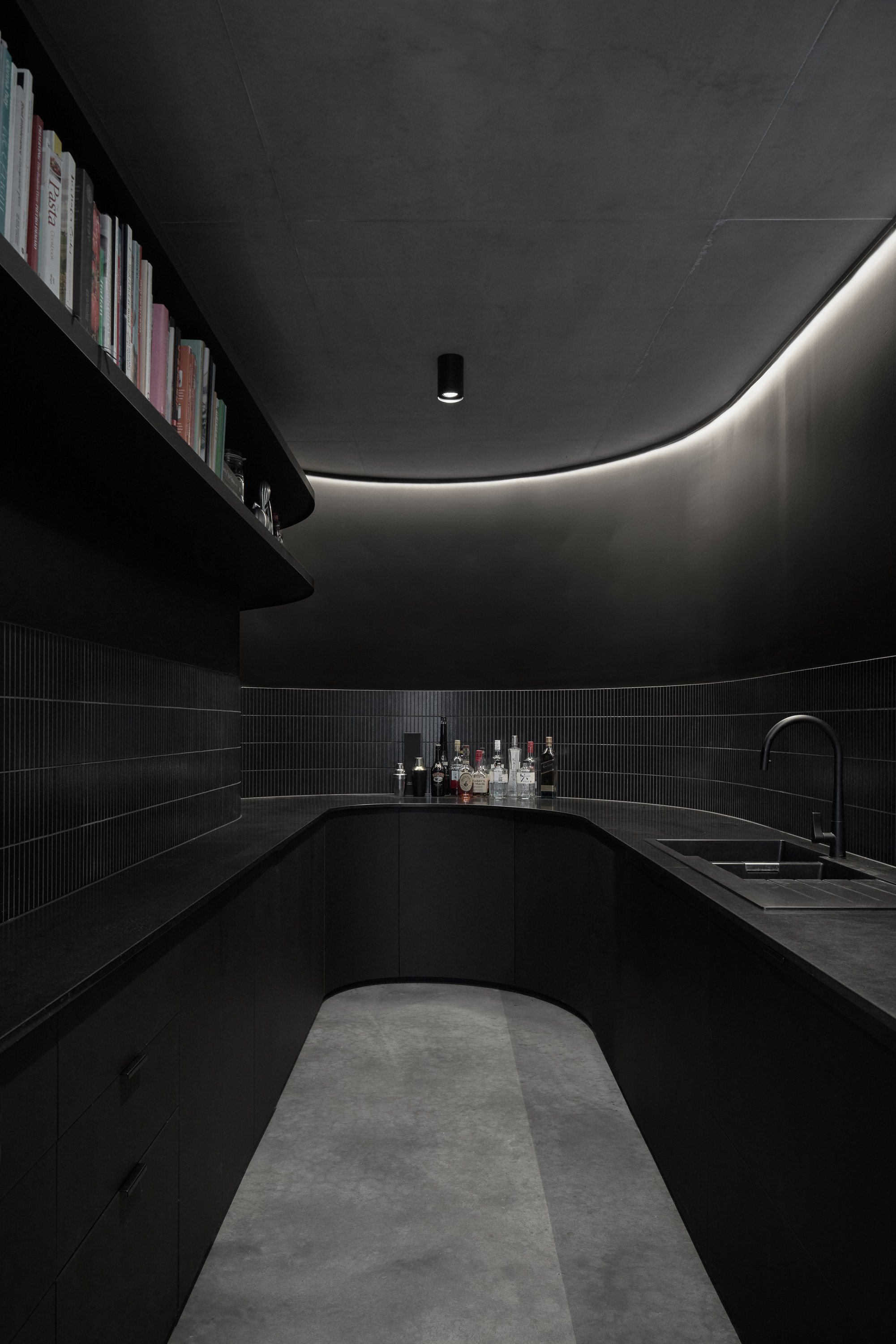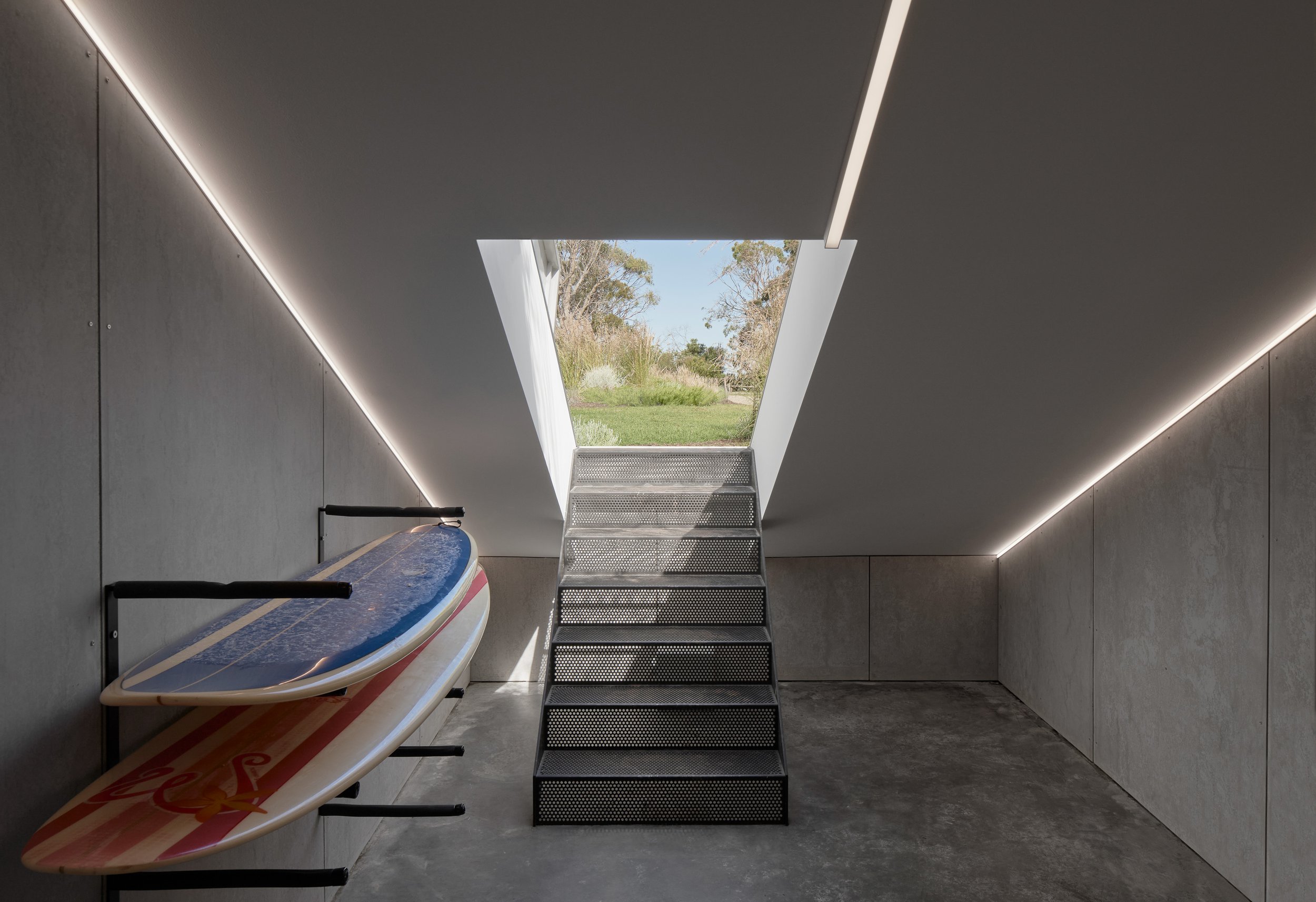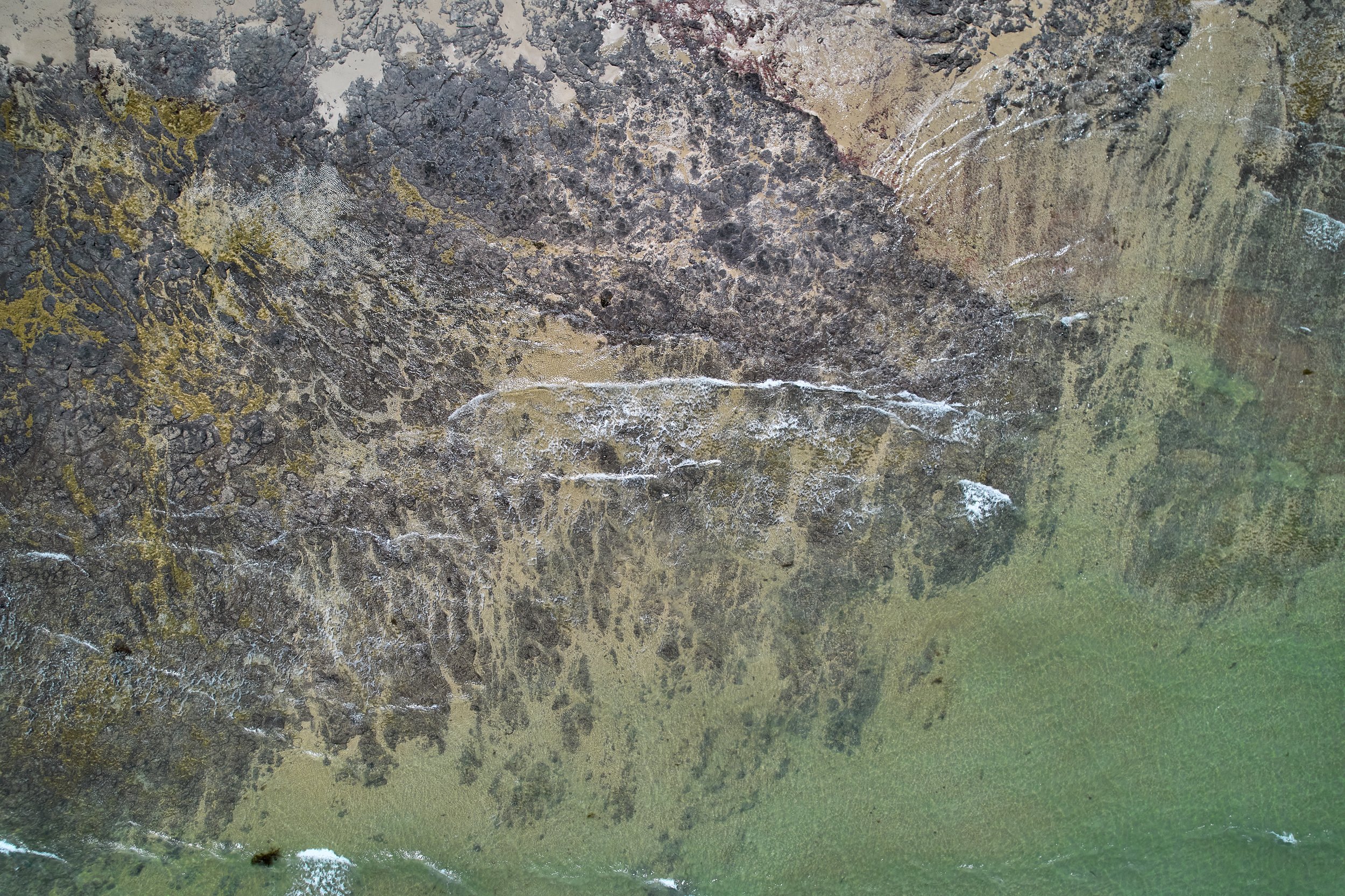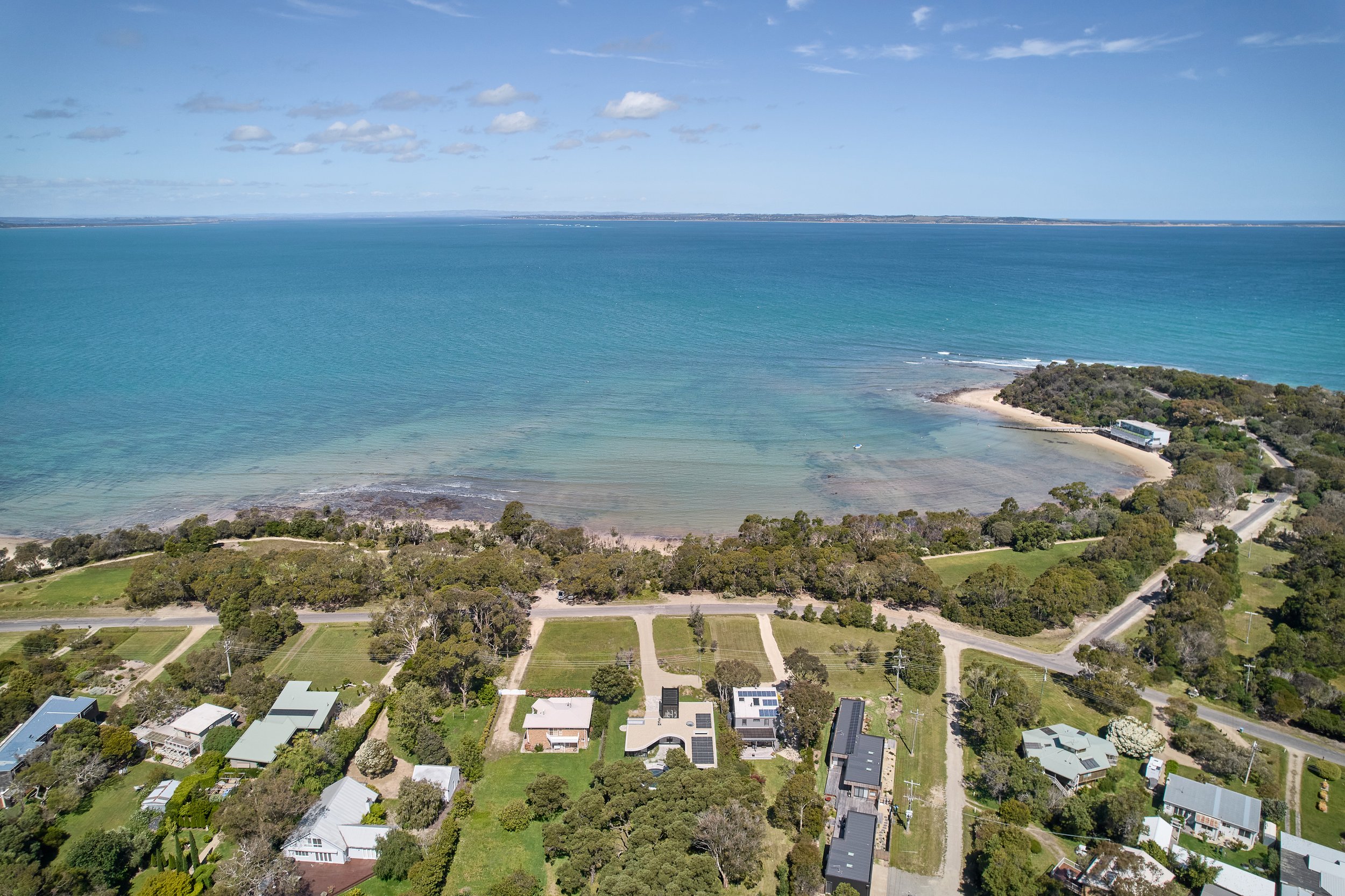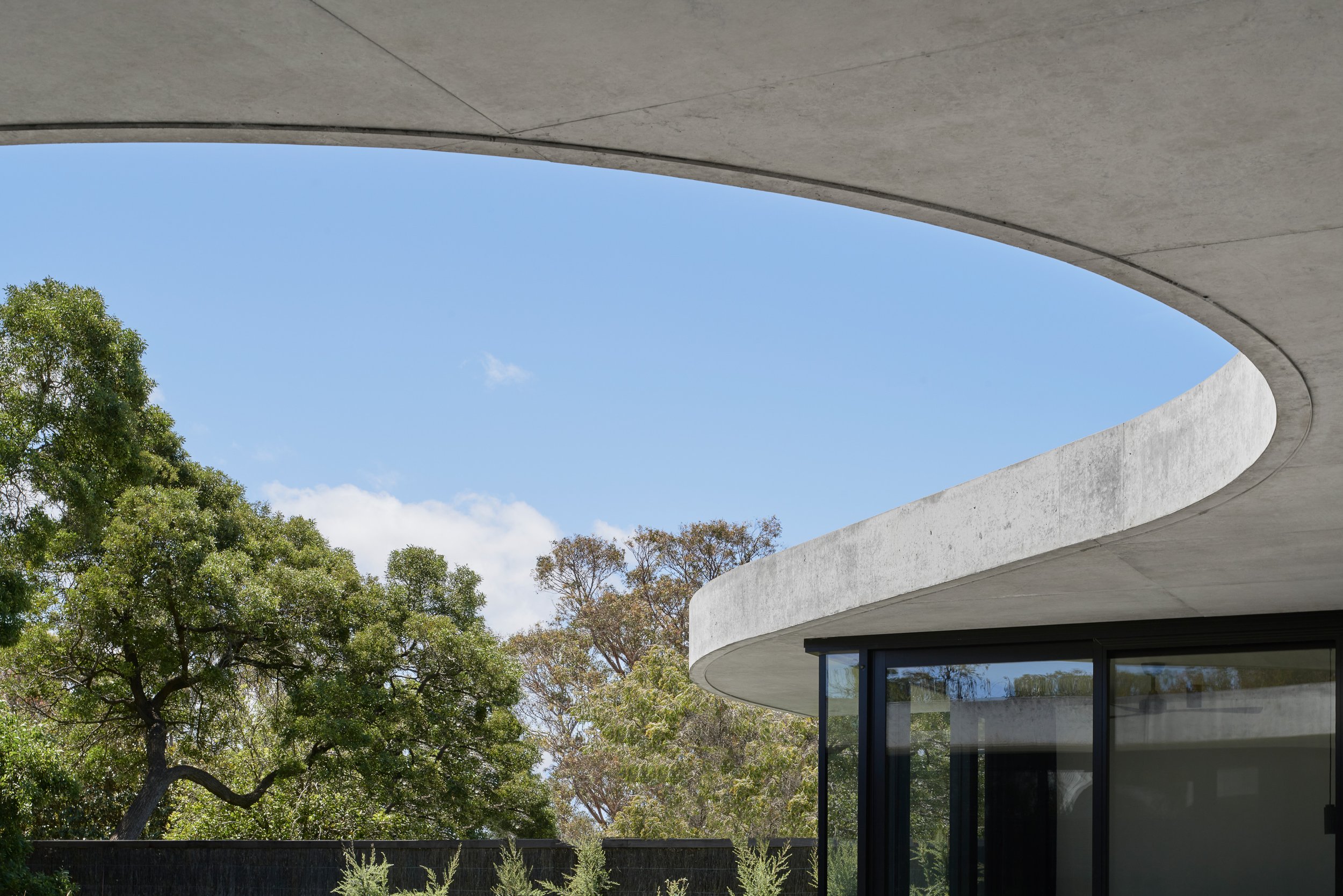CASA BOBBANARING
_
New Private Single Residence
Completed 2021
Location: Mornington Peninsula, Victoria, Australia
Photography: Peter Clarke
Casa Bobbanarring is located on the Mornington Peninsula in Victoria about 70km south-east of Melbourne.
[Bobbanarring] is the indigenous name for the area. [Casa] references Oscar Niemeyer’s - Casa Canoas from 1951.
The house is sited between a large open grassed area setback to the street and foreshore to the south and a vividly contrasting green sanctuary space, dotted with large, seemingly charred black-trunked Blackwood trees to the north.
The eastern and western edges of the site are pinned in by fairly nondescript two-storey residential houses.
Our clients came to us with an initial concept for a concrete house for themselves and their two teenage children. They were quite fond of the heavily concrete conceived Brazilian modernist architecture from the 1950’s and beyond. Sharing this same interest - our starting reference for the house was Oscar Niemeyer’s own house Casa Canoas from 1951, given its strong relationship to its site and expressive flowing concrete canopy which created a seamless transition between inside and outside.
Casa Bobbanarring opens itself up to the north through a formal curve in the concrete roof profile. This allows natural light to permeate deep into internal areas such as an open-planned and continuous kitchen, living and dining space within. ‘The form of the house curves creating a softened and more seamless relationship with its site’.
A central circular pool and incorporated spa provides a strong datum for the courtyard which then opens and emerges beyond. Pool balustrades are specifically visually ‘light and open’ to provide a continuity beyond to the rear heavily, treed sanctuary space.
The concrete roof form seemingly hovers over the lower concrete slab which is specifically elevated off the ground approx 250mm to provide relief from the ground plane and allow native grasses and the like to flow freely in and around the house. ‘The house seemingly floats within its site’.
Bedrooms are placed around the perimeter of the building edges to the north, facing into the central court and into the forest-scape beyond. The extension of the roof form visually increases the feeling of size and connection to place. These residual bedroom areas are specifically privatised from the street and are further enhanced by a softened natural light source within.
Bathrooms and wet-areas are treated as darker residual areas but all have their own visual connection to the primary courtyard and or captured landscape space within.
At the southern end of the plan - a singular but multi-functional timber joinery unit provides areas for a study, bookcase, record player and TV nook space. This intervention allows the central family room to become more about conversation around a triangular fire place than watching TV.
The garage / gallery space, study, pantry, laundry, front entry and Jewel box [an area designed to house surfboards] are all pragmatically placed to the southern end of the site towards the street for access to the main surf breaks which are located across the road from the house.
The frontage of the house was designed as a conceptual ‘hill or dune’ to create a formal continuity with the landscape. Native landscape elements such as grasses and shrubs vegetate parts of the elevation to bunker the house within its site and context.
The roof of the garage / gallery space is designed as a theatrical moment as it opens diagonally to reveal its internal contents. Our clients have a vintage car which they wanted to become a spectacle within the house. Along with a space for the car, the space has also been designed for art in mind becoming a dual programmed space depending on the clients activities.
Similarly access to the ‘Jewel box’ is controlled through a motorised flap which opens to revealing the inside of the landscaped ‘hill’. A series of steps leads one down into the space where surfboards can be easily displayed and accessed. ‘One traverses down inside the hill to find jewels’
A small multi-purpose room on the upper floor captures the only allowable view towards the ocean through a break in the trees on the nearby foreshore.
A series of operable timber shutters both on the public lower elevations and upper multi-purpose room, allow the house to be closed down and opened up at specific times of the day creating a highly adaptable living quality for its occupiers. The house can be very open and public or can be very private.
The material pallette for the project is very specifically and intentionally minimal to further enhance the relation of the house with its site and context. The house consists of all concrete floors and formed line concrete ceilings, black aluminium windows as quite specific to our clients brief and environmental factors with the house’s proximity to the harsh costal environment, native Australian timber cladding externally and all joinery Internally is treated in a singular timber veneer for visual cohesion and clarity of space.
A series of apertures in the concrete roof allow light to celebrate and formally highlight specifically important areas such as the primary dining space.

